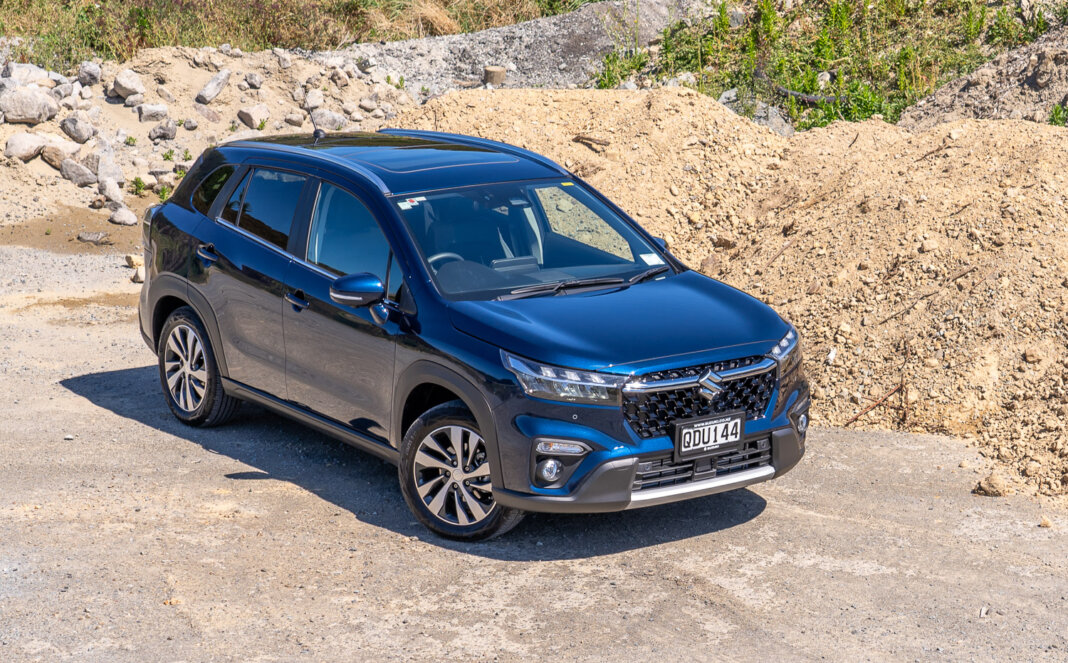It’s Suzuki’s largest passenger model and for 2024, Suzuki has added hybrid capability to their S-Cross model along with some other features like driver assist systems. Can a hybrid version lift sale of the S-Cross?
We’ve had experience with Suzuki’s Smart Hybrid Vehicle system (SHVS) before when we tested the Swift Hybrid and it left us a little disappointed. Will the S-Cross deliver a better experience? We drive the S-Cross Hybrid model for 1,000km to find out.
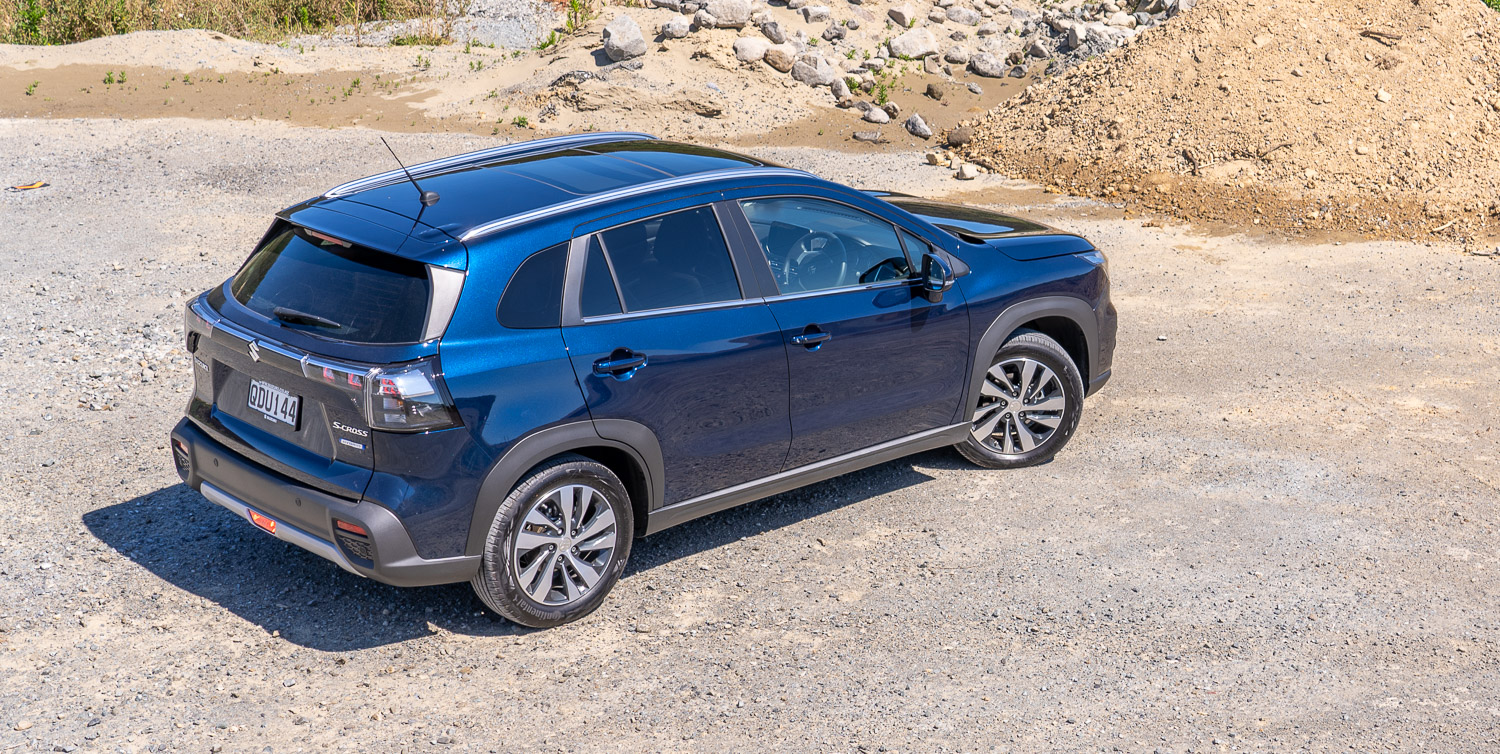
What We Like and Dislike About The 2023 Suzuki S-Cross JLX Hybrid AWD
| What we like | What we don’t like |
| Standard equipment levels Performance in Sport mode Pleasing design Feeling of space inside Clear instruments Visibility Low tyre noise levels | Fuel economy Engine noise at times Affected by cross-winds Road and wind noise Hybrid setup is extremely mild Occasional mild drivetrain shunts |
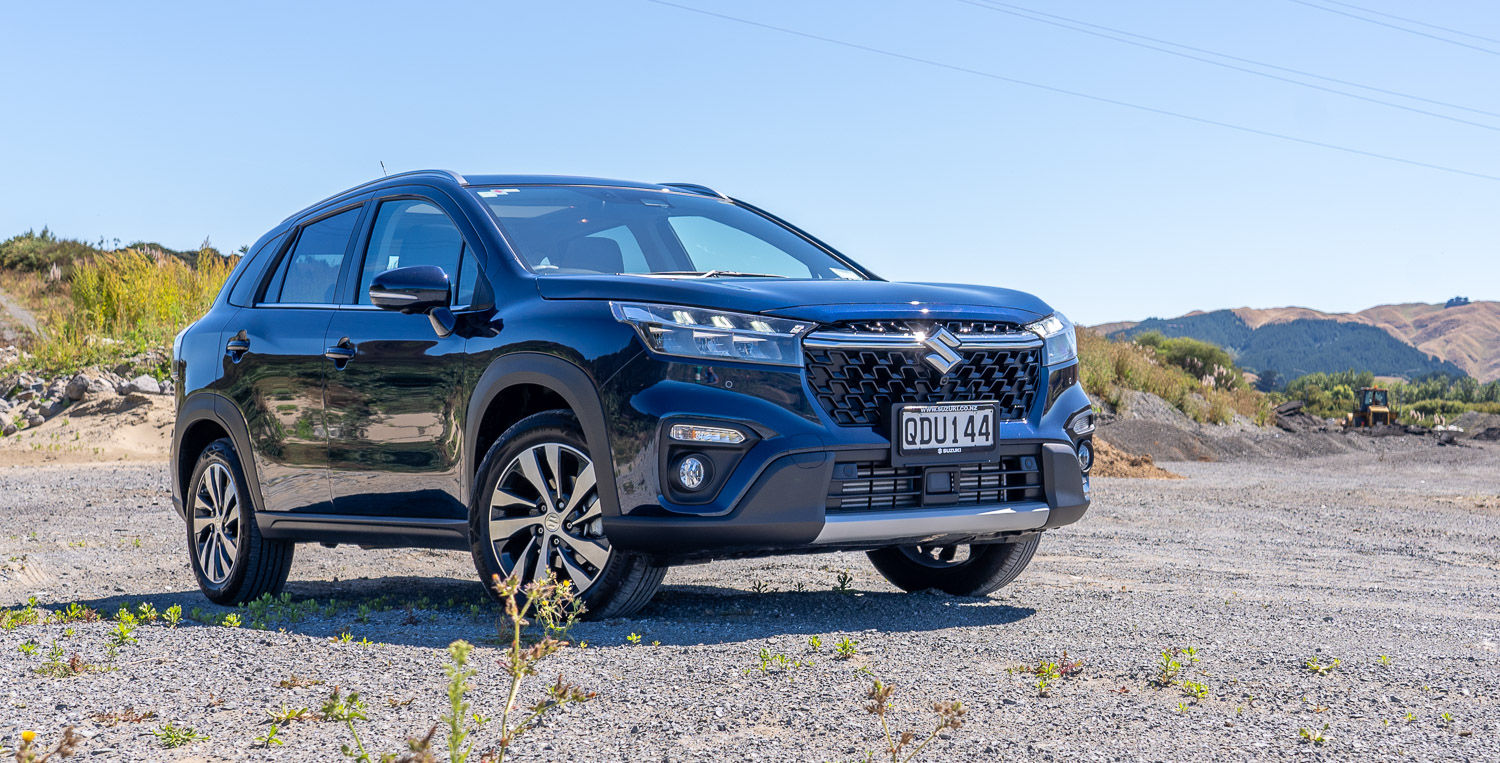
What’s In The 2023 Suzuki S-Cross Hybrid Range?
Suzuki splits the hybrid versions of the S-Cross into a separate range. You get to pick from two models: two-wheel drive or four-wheel drive.
S-Cross Hybrid JLX 2WD: $42,990
S-Cross Hybrid JLX 4WD: $45,990
As a price comparison, the 2WD S-Cross JLX non-hybrid is $40,500, so you are paying $2,500 for hybrid capability. There is no 4WD version of the non-hybrid so if you want an all-wheel drive S-Cross you’ll need to stump up for the hybrid version.
Like the non-hybrid models, both models run Suzuki’s 1.4-litre, 4-cylinder turbocharged “BoosterJet” engine but in the hybrid versions, this puts out 95kW of power (compared to 103kW in the non-hybrid) and 235Nm of torque (vs. 220Nm). The transmission is a 6-speed automatic, with fuel consumption of the 2WD listed at 5.5L/100km and 5.9 for the AWD version.
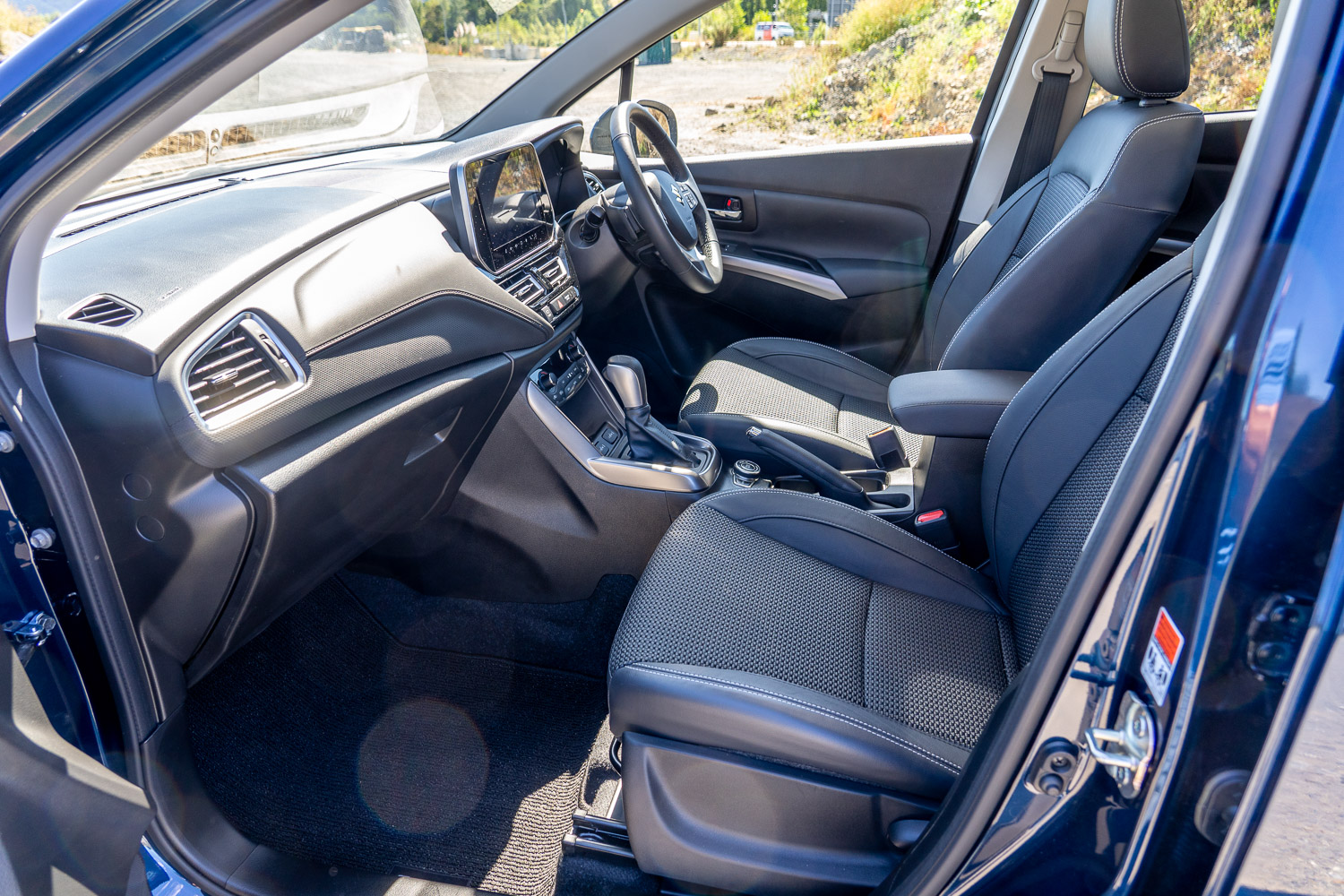
2023 Suzuki S-Cross JLX Standard Equipment Highlights
Other than all-wheel drive, the specifications across the two models are identical.
- 9” central touchscreen
- SatNav
- Seve-speaker audio
- Wireless Apple CarPlay
- Tilt/Slide panoramic sunroof
- Dual-zone AC
- Leather steering wheel
- Heated front seats
- Privacy glass
- LED self-levelling projector headlamps
- Automatic headlamps
- LED DRLs
- Front and rear fog lamps
- LED rear lights
- 17” alloy wheels
- Heated, electrically folder exterior mirrors
- Auto wipers
- Adaptive cruise control with stop/go
- Lane departure warning
- Weaving alert
- 360-degree camera
- Front and rear parking sensors
- Speed limiter
- Hill descent control
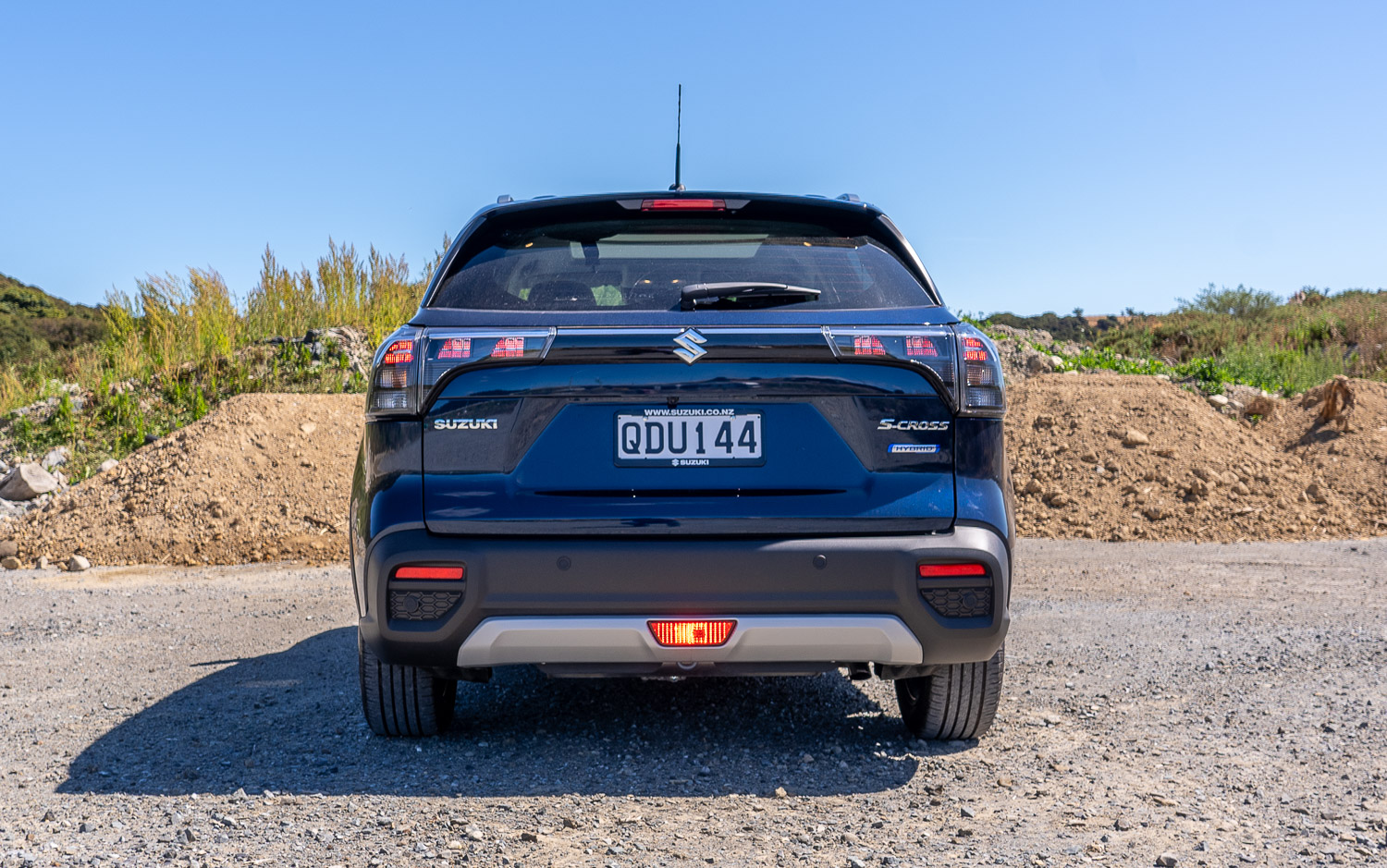
2023 Suzuki S-Cross JLX Colour Range
There are 7 colours in the S-Cross Hybrid range, and none incur extra cost:
- Canyon Bronze
- Sphere Blue
- Energetic Red
- Cool White
- Cosmic Black
- Titan Grey
- Silky Silver
For a full list of specs and options available for the 2023 Suzuki S-Cross JLX Hybrid AWD head on over to Suzuki New Zealand’s website.
How Does The 2023 Suzuki S-Cross JLX Hybrid AWD Compare To Its Competition?
The RAV4 is the base model but I’ve included it regardless. Trying to find small/medium hybrid SUVs that are all-wheel drive is not easy.
| Make/ Model | Engine | Power/ Torque kW/Nm | Seats | Fuel L/100km | Towing Capacity | Boot Space, litres | Price |
| Toyota RAV4 GX Hybrid | 2.5-litre, 4-cylinder petrol-hybrid | 131/221 | 5 | 5.3 | 750/1,500 | 580 | $48,590 |
| Suzuki S-Cross JLX Hybrid AWD | 1.4-litre, 4-cylinder turbo-petrol with hybrid assist | 95/235 | 5 | 5.9 | 600/1,500 | 430 | $45,990 |
| Mitsubishi Eclipse Cross VRX AWD | 1.5-litre, 4-cylinder petrol | 112/254 | 5 | 8.6 | 750/1,600 | 405 | $45,990 |
| Kia Seltos EX Turbo AWD | 1.6-litre, 4-cylinder turbo-petrol | 146/265 | 5 | 8.2 | 600/1,250 | 433 | $43,850 |
Please note that DriveLife does its best to ensure the information above is correct at the time of publication, however, prices, specifications and models can change over time. Please bear that in mind when comparing models in the comparison table.
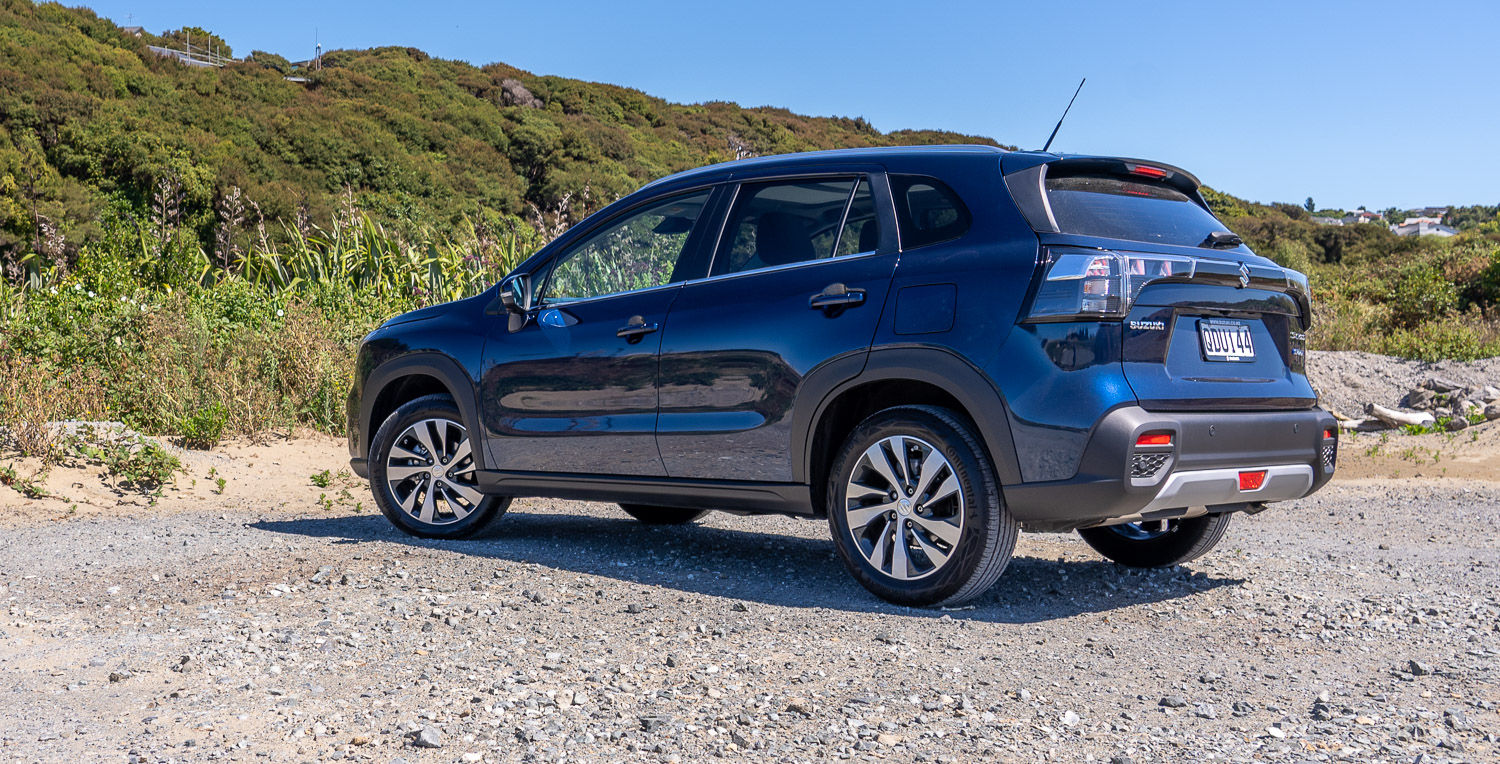
First Impressions Of The 2023 Suzuki S-Cross JLX Hybrid AWD
Suzuki call the S-Cross “muscular” and it’s hard to disagree. Finished in Saphire Blue Pearl, our test car stood out from the crowd. For me, the biggest difference from the last S-Cross I drove is in the size; all of a sudden, the car has grown up and out. But it doesn’t look like it’s gained a mid-life belly and does look muscular after all.
Suzuki’s designers have done well in keeping that S-Cross look, the Suzuki family look, but also making it a bit more modern and contemporary.
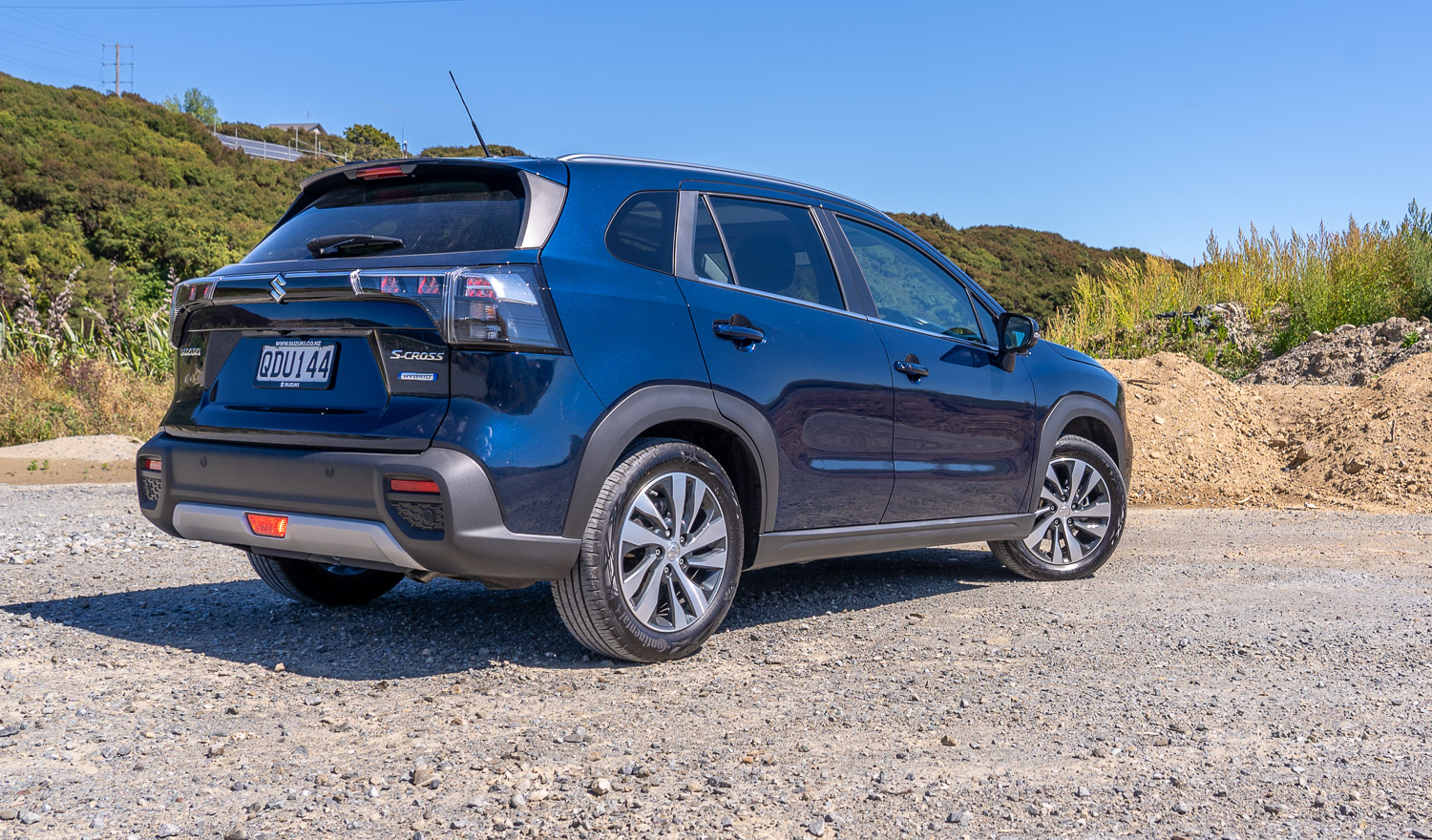
What’s The Interior Like In The 2023 Suzuki S-Cross JLX Hybrid AWD?
You’ll be greeted with a welcoming interior on opening a door, as a white headliner and pillars really lift the interior of this car. Add to that a huge, electric panoramic sunroof and the feeling of spaciousness is the order of the day.
And it’s not just a feeling you’ll get; with a ‘real’ SUV body, the car is quite practical in the front and boot area. Rear-seat passengers don’t fare quite as well, with that sunroof eating into roof space a fair bit. Overall though, it’s a great place to travel in, and during our time with the car, we took it to Hawera to work on our project car. That meant a 4-hour, 300km drive each way; a great test of a car’s interior, seat comfort and performance.
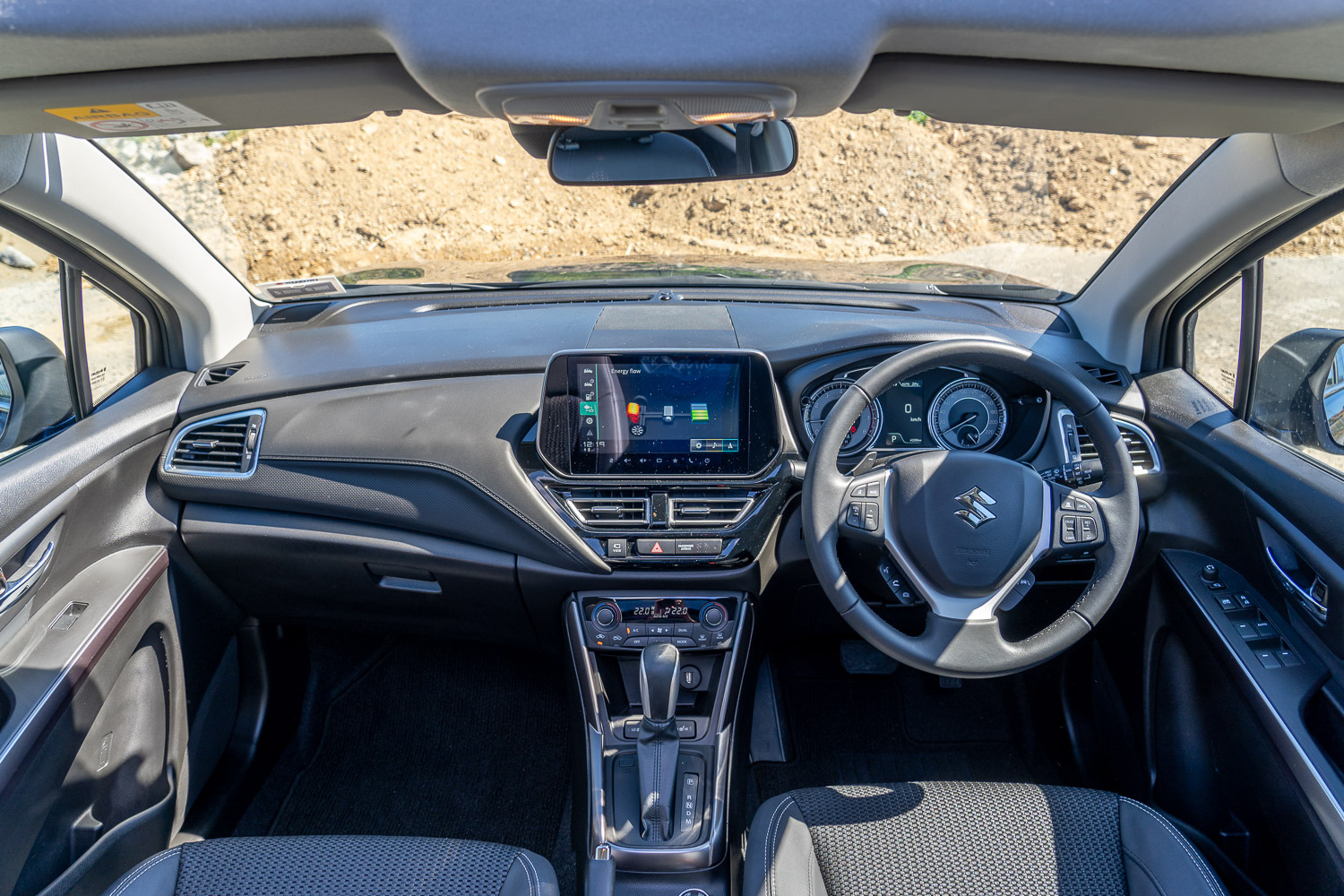
While in Hawera, I ended up doing some taxiing with friends and managed to squeeze five adults into the car. It was a bit tight in the back seat, but my passengers weren’t the smallest of men either. For your average pair of grandparents who take the grandkids away now and then, it’d be fine.
Weirdly, while the S-Cross Hybrid has just a single USB-A port in front, you get wireless Apple CarPlay but not wireless Android Auto – so if you have an Android phone, you’ll need to connect it via the USB port. There is a 12-volt socket, but it’s in the centre cubby meaning my dashcam cord had to wind its way along the passenger’s seat before going up to the windscreen. Rear-seat passengers get no air vents and no USB ports, perhaps showing the S-Cross’ age a little in this department.
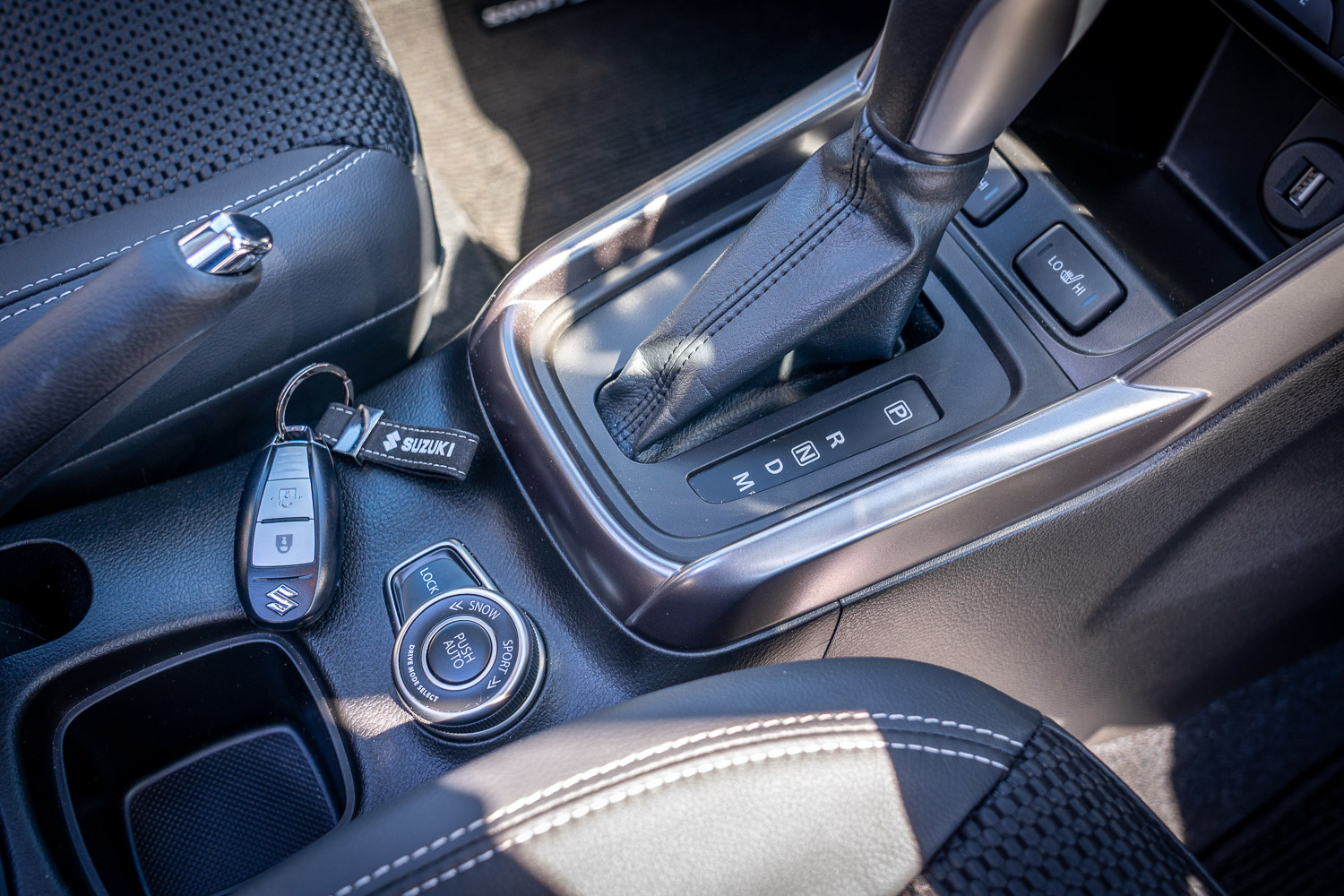
The boot is a great size at 430 litres, and it’s a double-height unit too, adding practicality. While there’s no spare, you do get a tyre pump and tyre repair kit. The boot area has some nicely sized side pockets and a 12-volt socket for your camping needs.
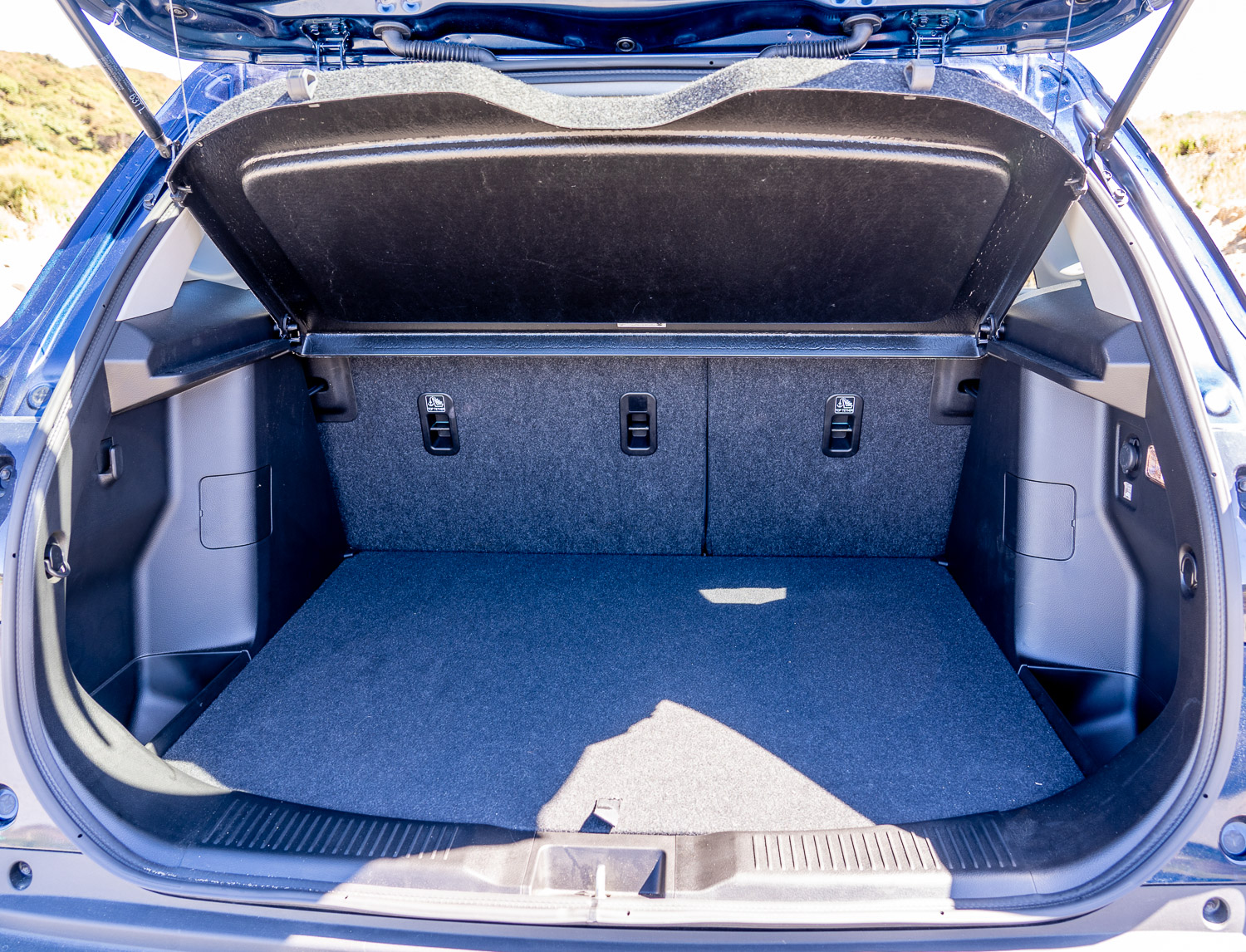
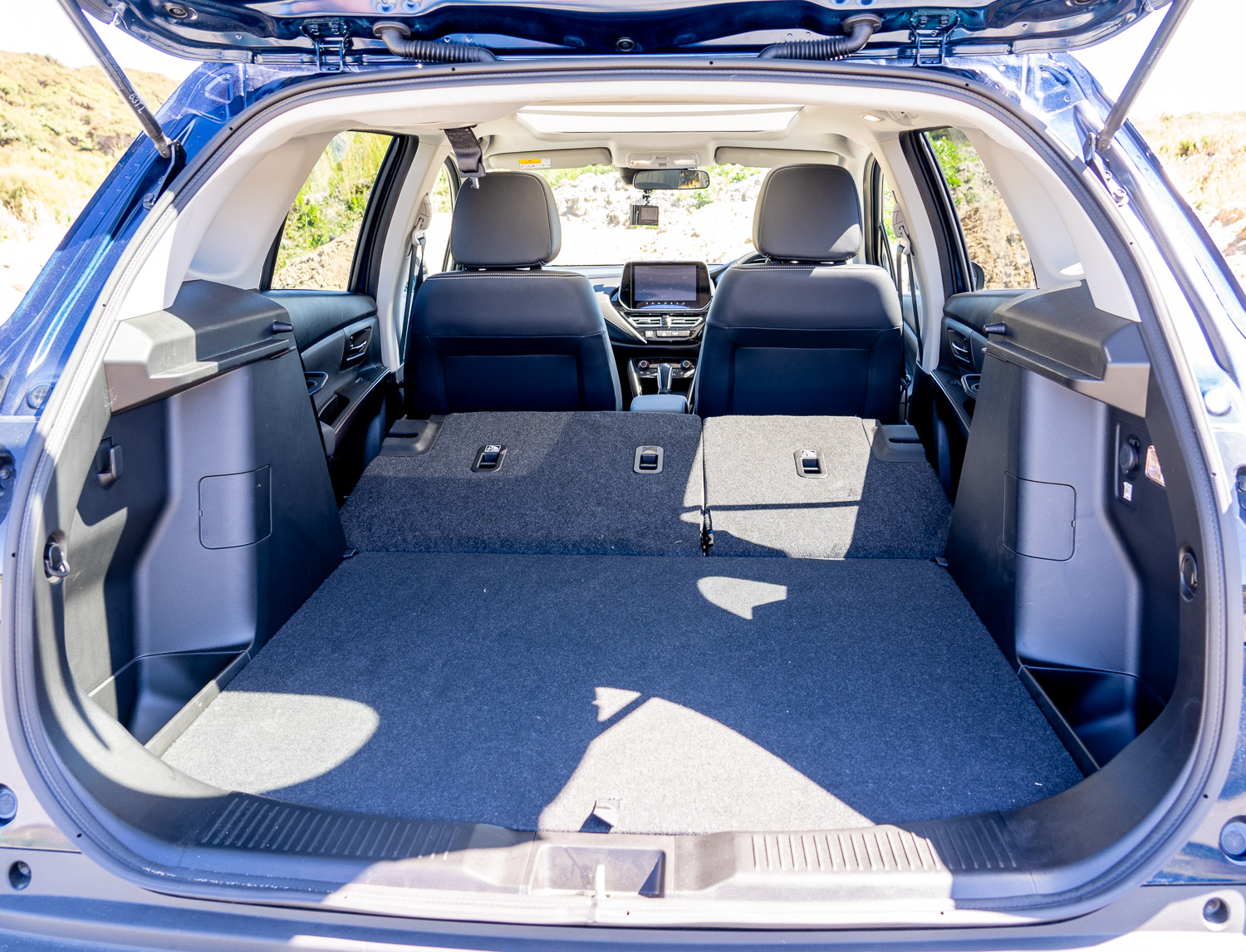
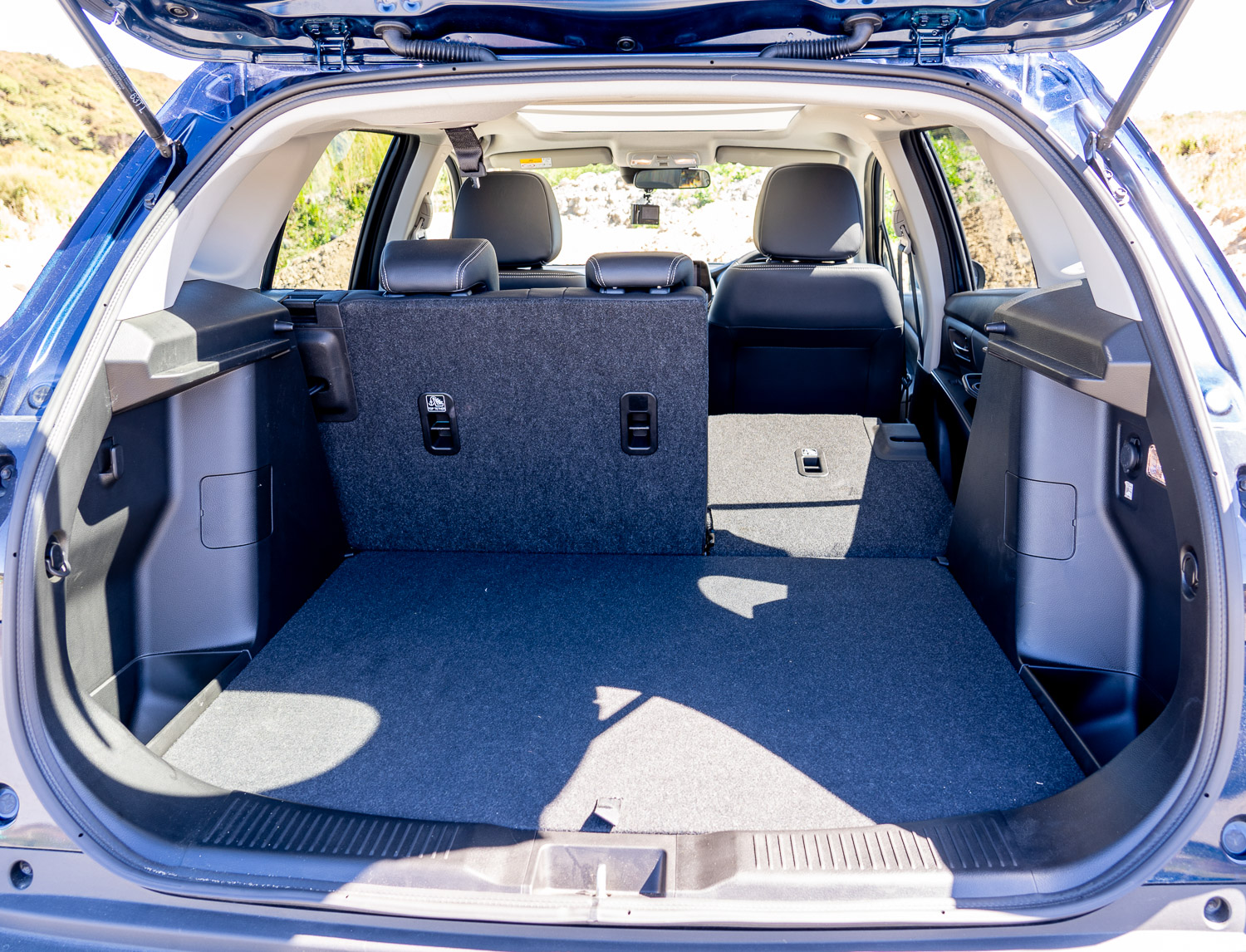
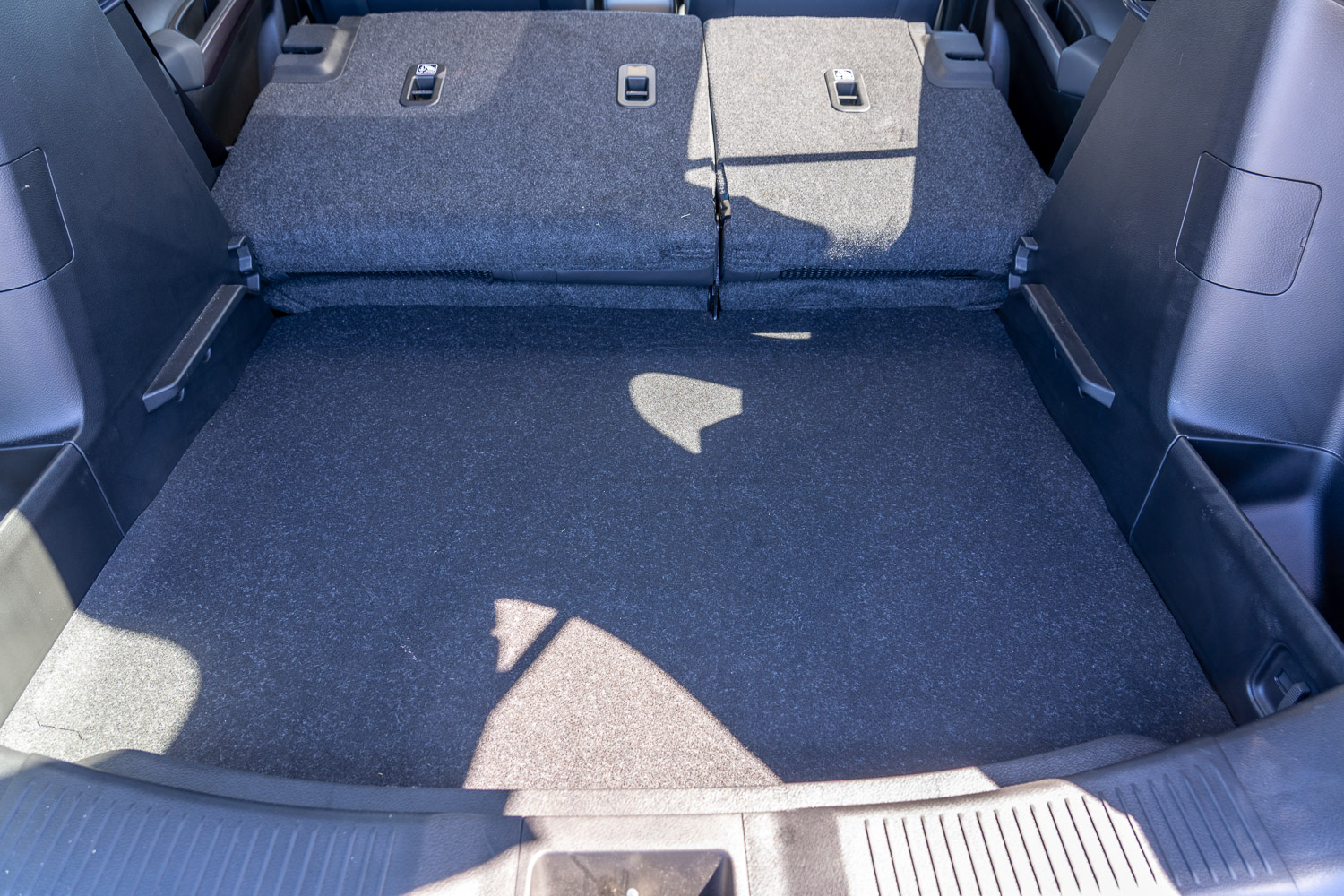
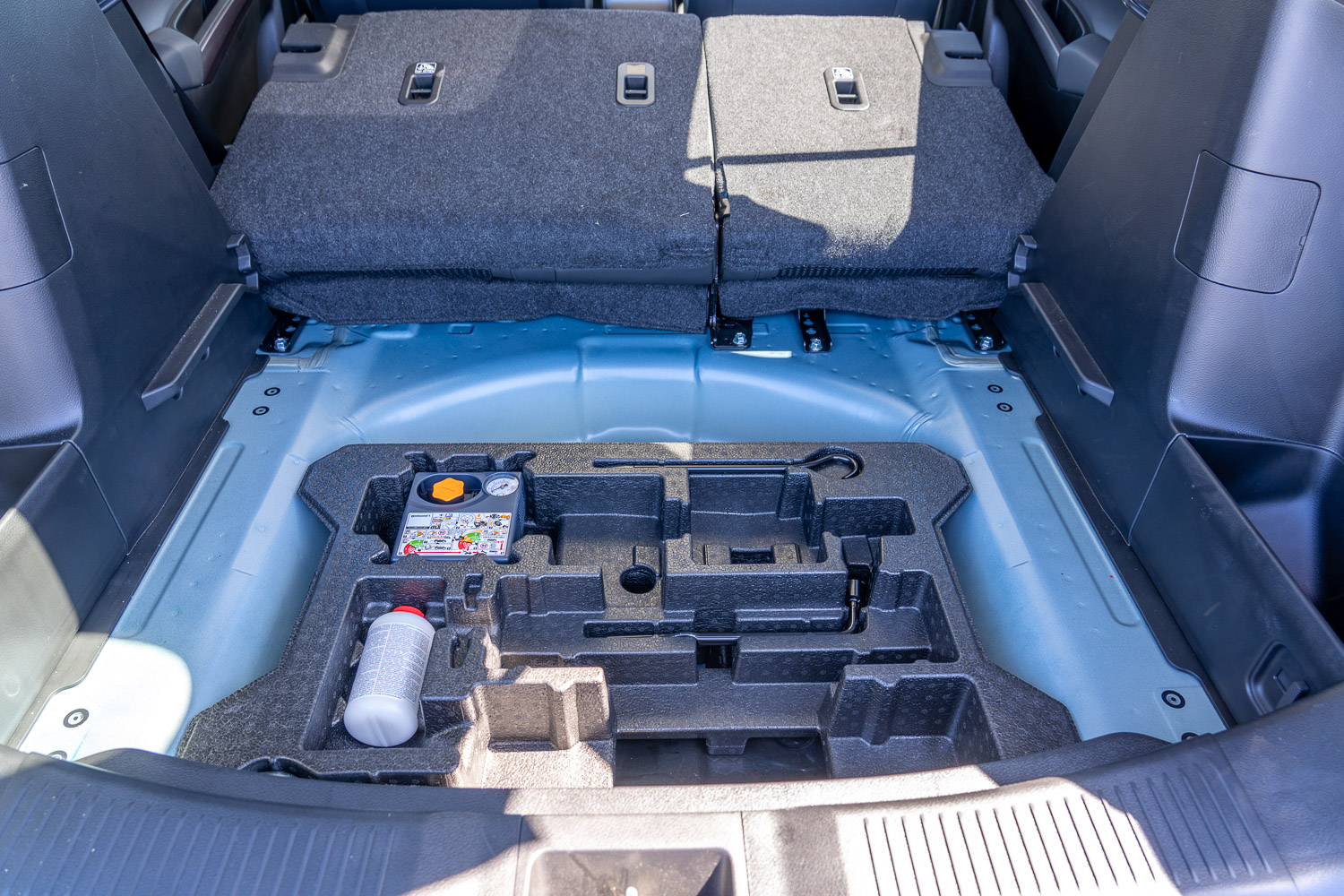
What’s The 2023 Suzuki S-Cross JLX Hybrid AWD Like To Drive?
Since Alistair reviewed the current S-Cross model in 2022, let’s start off with the hybrid side of things. To be clear, the S-Cross Hybrid system is only an assist system and a mild one at best. Although it runs a 48-volt hybrid system (compared to 12-volts in the Swift Hybrid), the battery is just 8aH in size. For comparison, you can buy a battery for your drill at that size. This means the hybrid battery is not going to move the car on its own. Suzuki has purposely designed their Smart Hybrid Vehicle system (SHVS) system to help the car’s performance and not to drive it on battery power alone. This might disappoint some buyers who believe that their S-Cross, being a hybrid, will run silently at times.
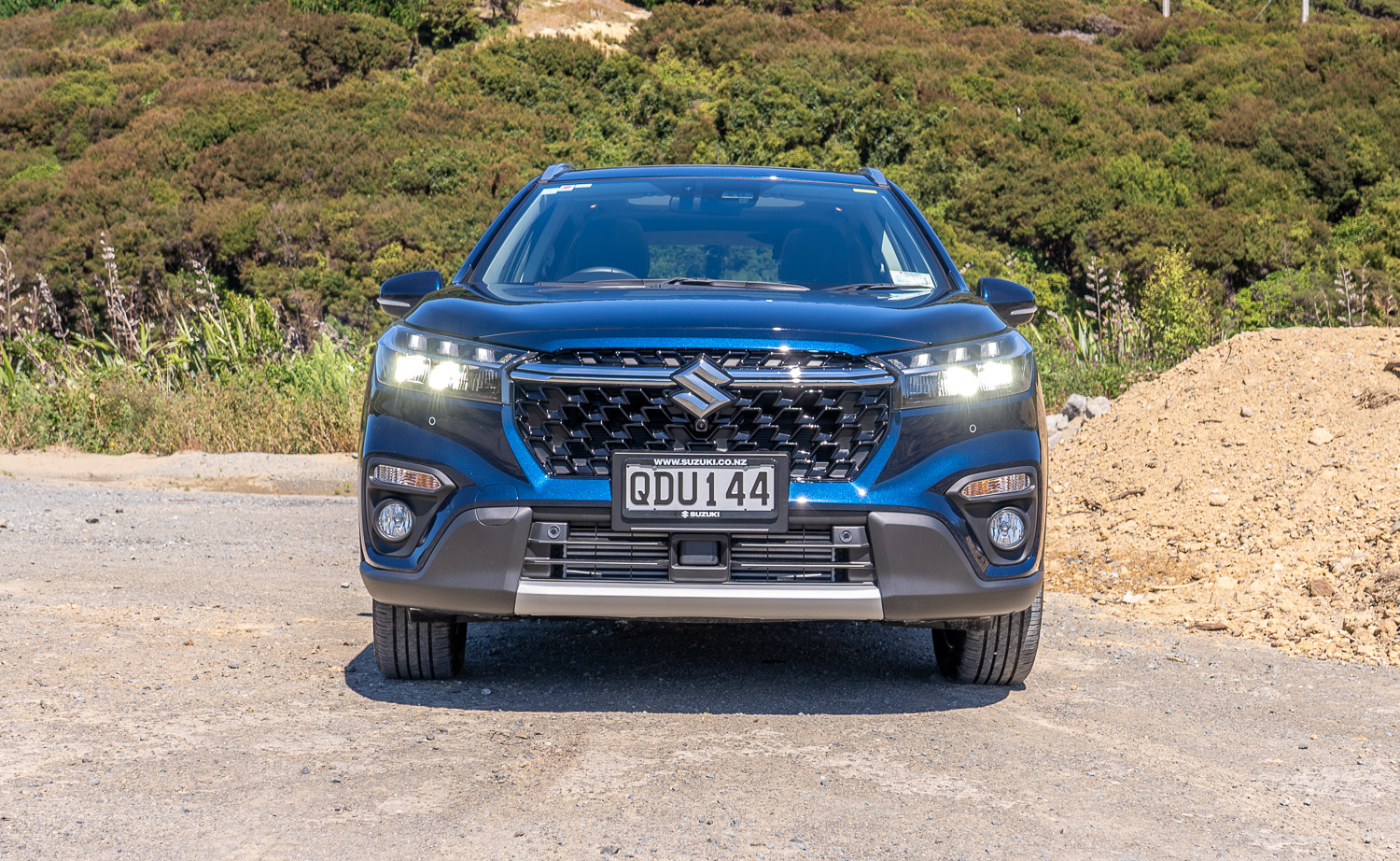
There is no separate electric motor in the S-Cross Hybrid; instead, there is an “Integrated Starter Generator (ISG) that works with the battery when more performance is needed and should add better fuel economy too, since you shouldn’t be using the gas pedal as much. While we normally leave our fuel economy during testing until the end of the review, let’s get it out in the open now; over 1,000km of driving, we managed to achieve 6.1L/100km from the S-Cross Hybrid. This compares pretty well with the 5.9L/100km that Suzuki suggests the car should achieve, but our test driving included a 600km round trip to Hawera to work on our project car so that would mean our combined driving was more open road than city/suburban.
But is 6.1L/100km a good result? When I last reviewed the S-Cross back in 2017, I achieved 6.0L/100km in my real-world testing. That means our test car used slightly more fuel than the non-hybrid. But if you then look at Alistair Weekes from DriveLife who reviewed the S-Cross in 2022, and he achieved 7.3L/100km. So either Rob has a much heavier right foot than I do, or something has happened in the newer model’s drivetrain. Comparing apples and apples (me driving both cars) is where I’m sitting, and it doesn’t make the $2,500 difference worthwhile for the better performance achieved. Being a turbo, the S-Cross Hybrid does require 95 or higher octane-fuel – as do the non-hybrid models.
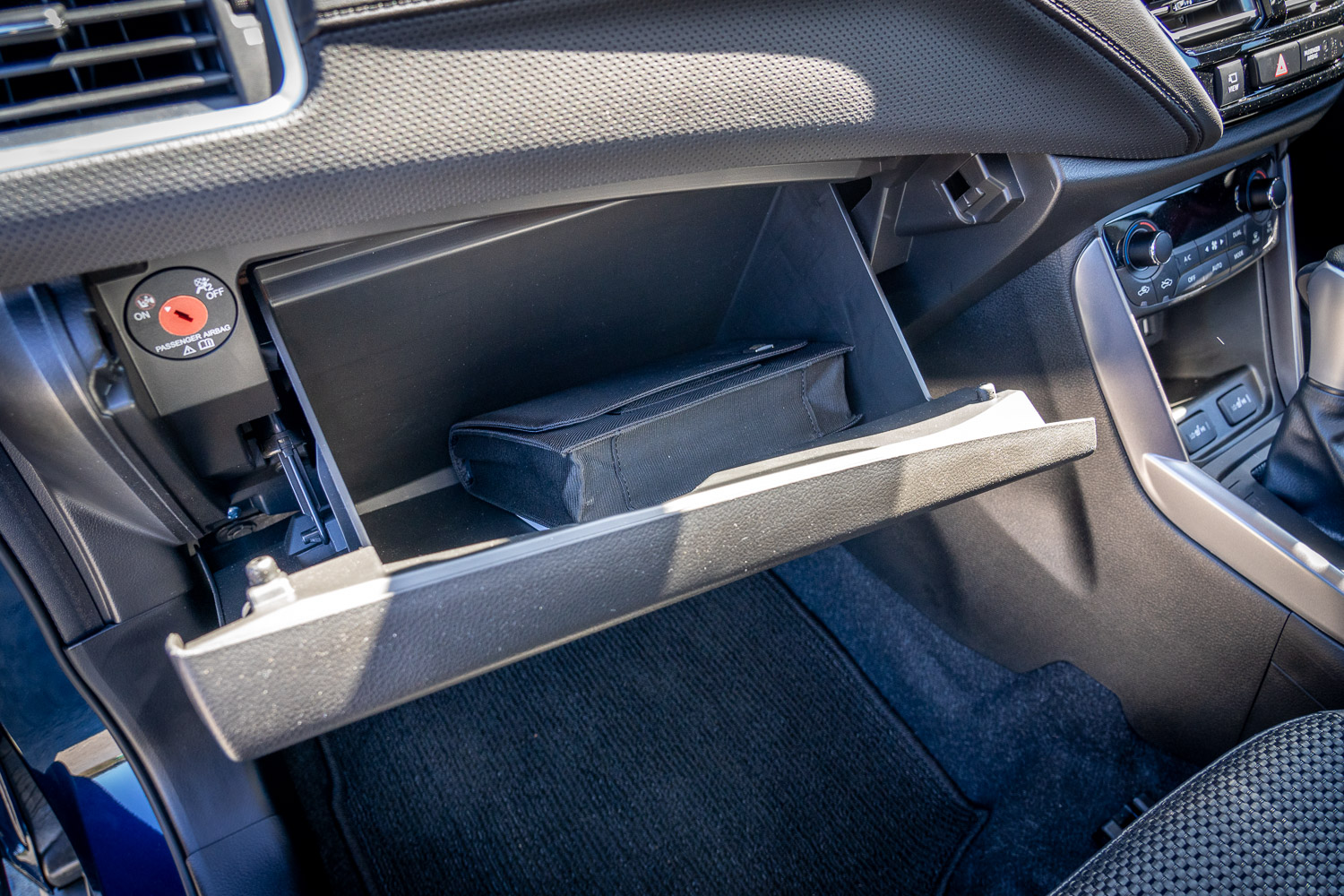
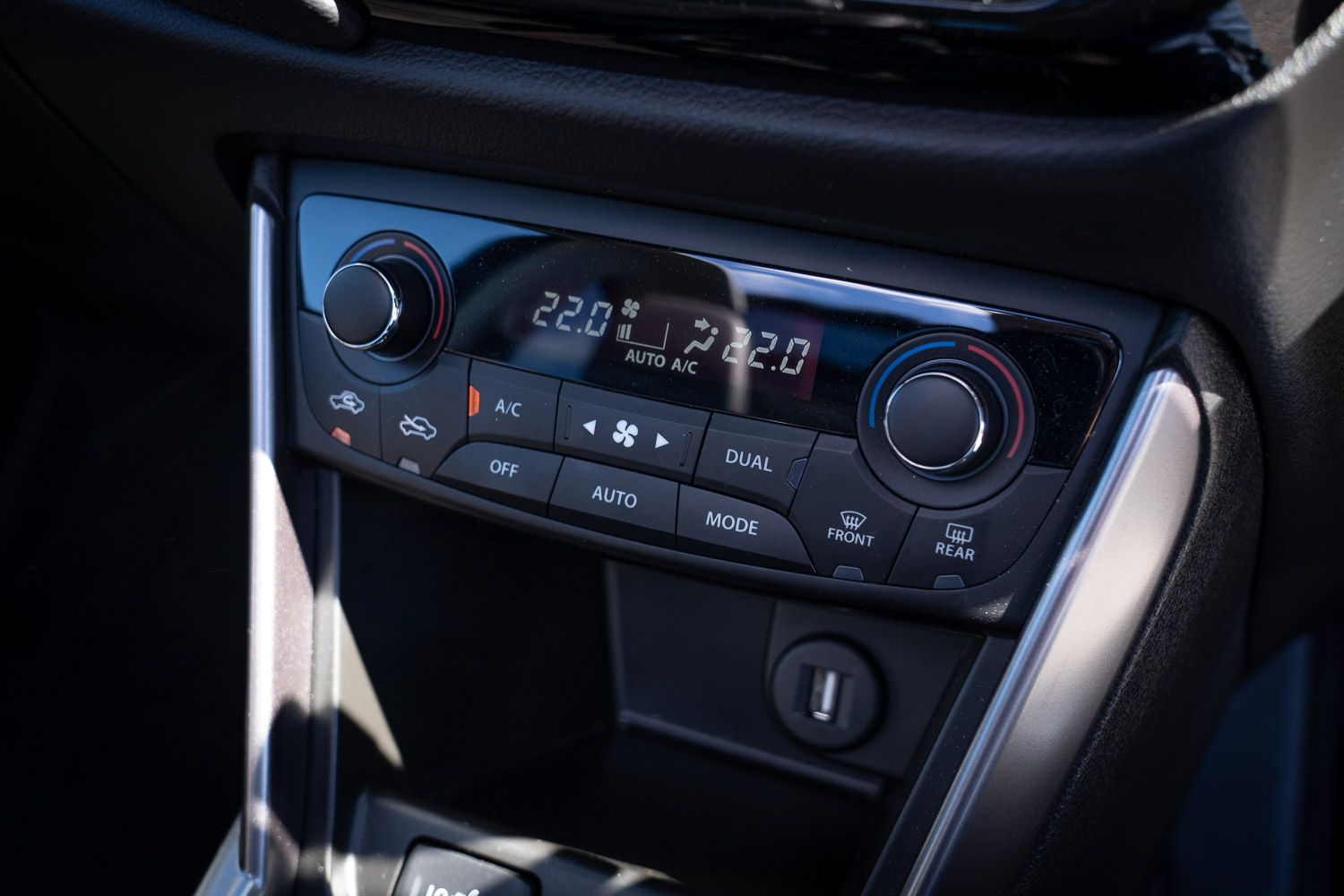
So putting aside the fuel economy penalty, what’s the Suzuki S-Cross Hybrid like to live with, and take on a long trip? It’s pretty good, actually. That Boosterjet engine, while starting to show its age, is still usable. It loves to rev, and that torque helps immensely on the day-to-day drive. Sure, it’s only 235Nm of torque, but with a weight of 1,330kg the S-Cross Hybrid moves along quite nicely. Stick the car into Sport mode and it’s an eager little SUV and a pleasure to drive. My only criticism of the Boosterjet is engine noise; In 2017 i gave the S-Cross with this engine a “pro” of having a quiet engine. But that was a full seven years ago, and other engines have come so far and are much quieter than the Boosterjet is now. It’s never bad, but as mentioned, it’s showing its age in 2024.
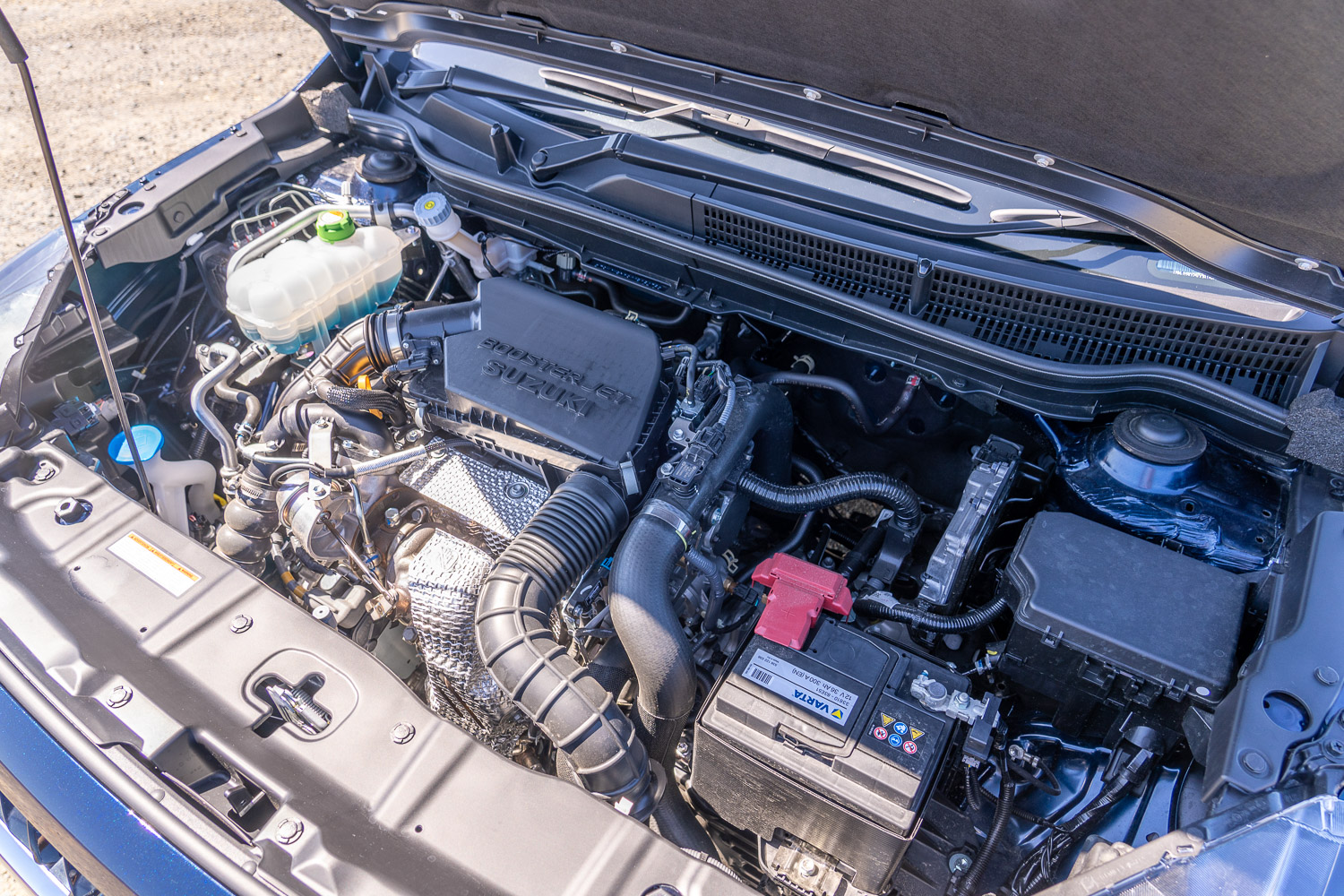
The hybrid side of things does help performance a little, giving some light hybrid assistance when needed. You can switch on one of the driver’s displays to show when the hybrid system is kicking in and can show the same screen on the centre display. One thing that display highlighted was that the hybrid side of the S-Cross comes in most when you are slowing to a stop; just before you do stop, the engine turns off and the car coasts a little on battery power – but any touch of the gas pedal will see the engine start again.
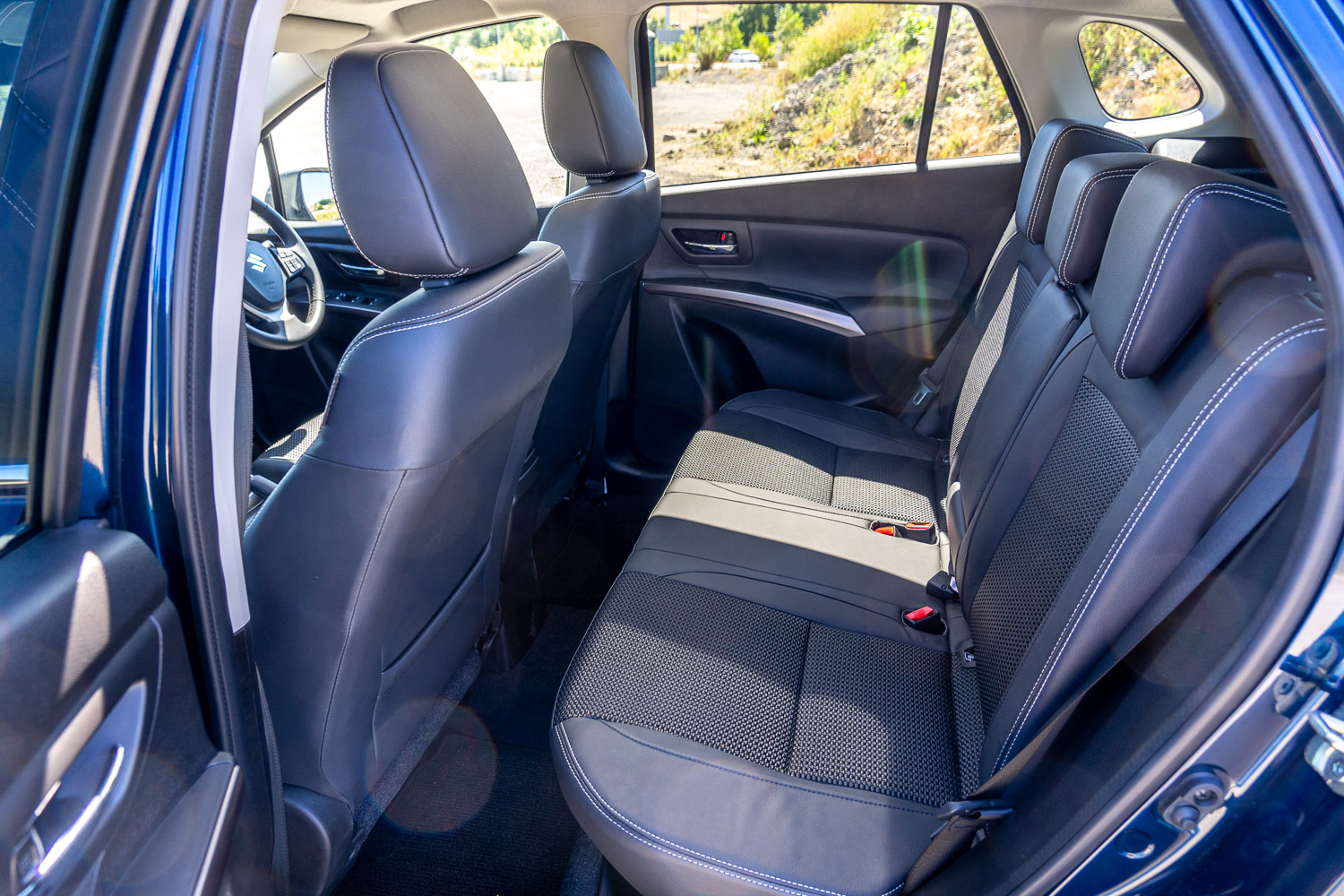
There is no brake regeneration (regen) setting on the S-Cross Hybrid. There are steering wheel paddles, but they only control the automatic transmission. It was nice to use a ‘normal’ gear lever in the S-Cross Hybrid, after a long run of cars with gear shift buttons, selectors and stalks. Pulling the gear lever right back will put the car into manual mode, but you’ll need to use the paddles to change gears at that point.
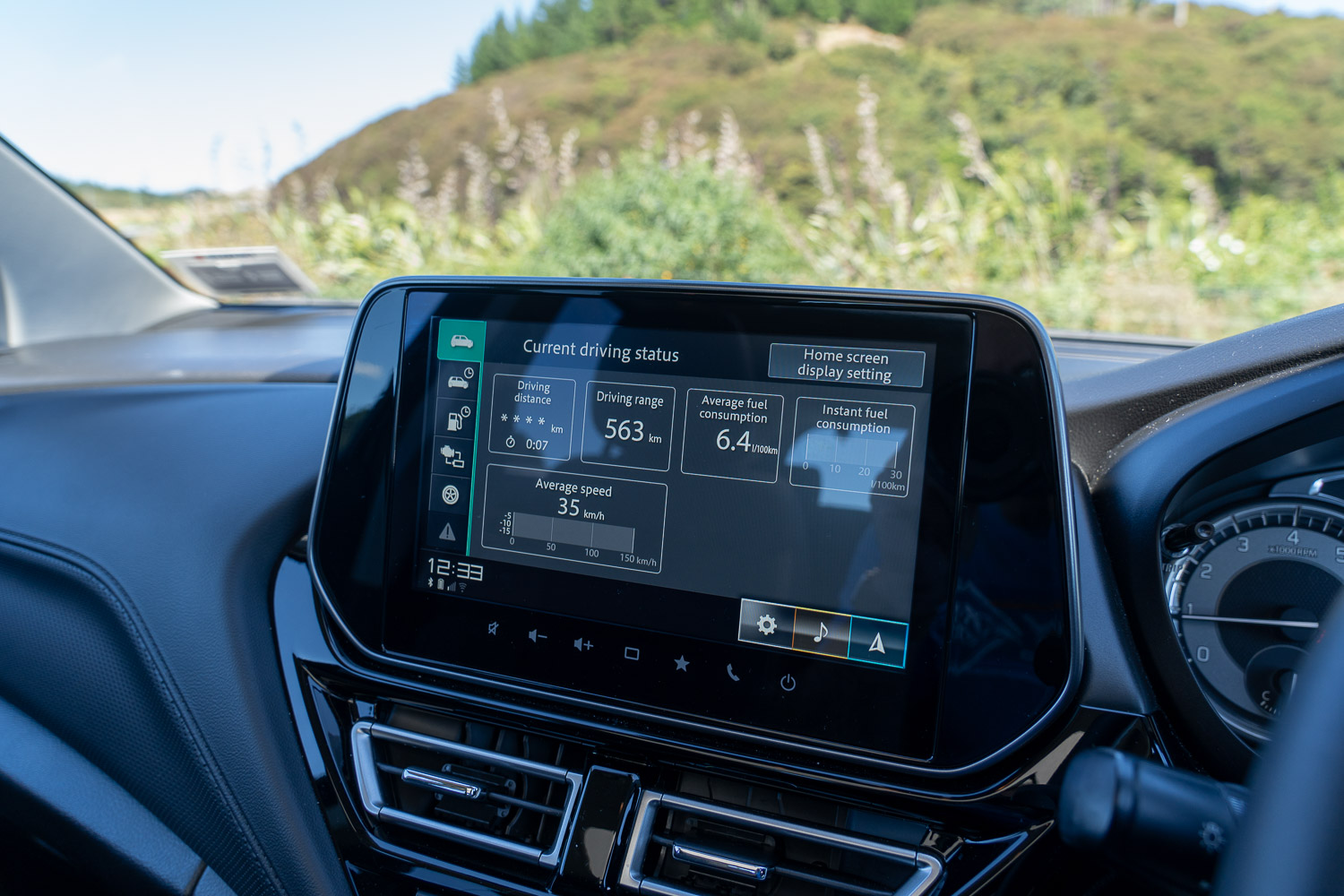
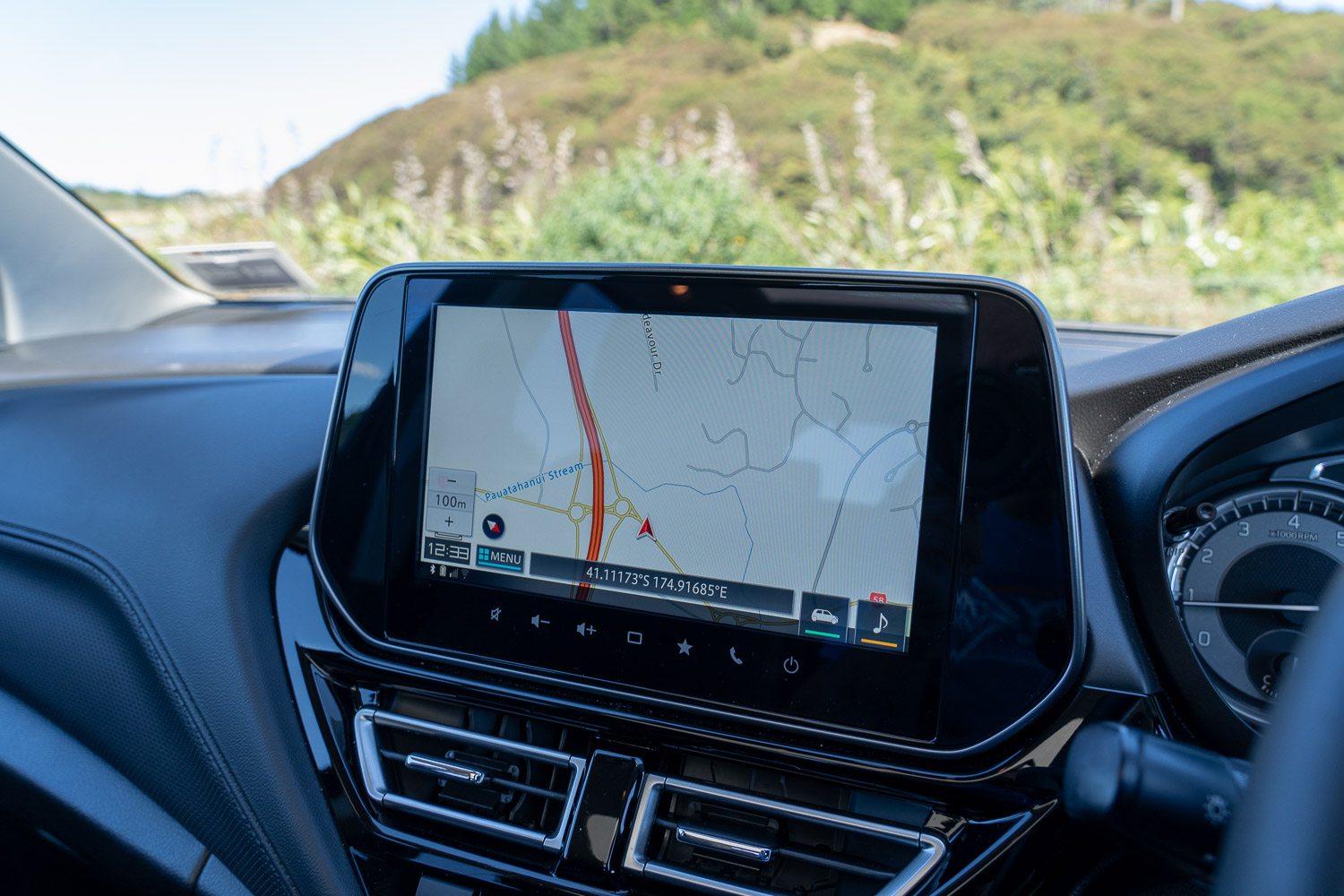
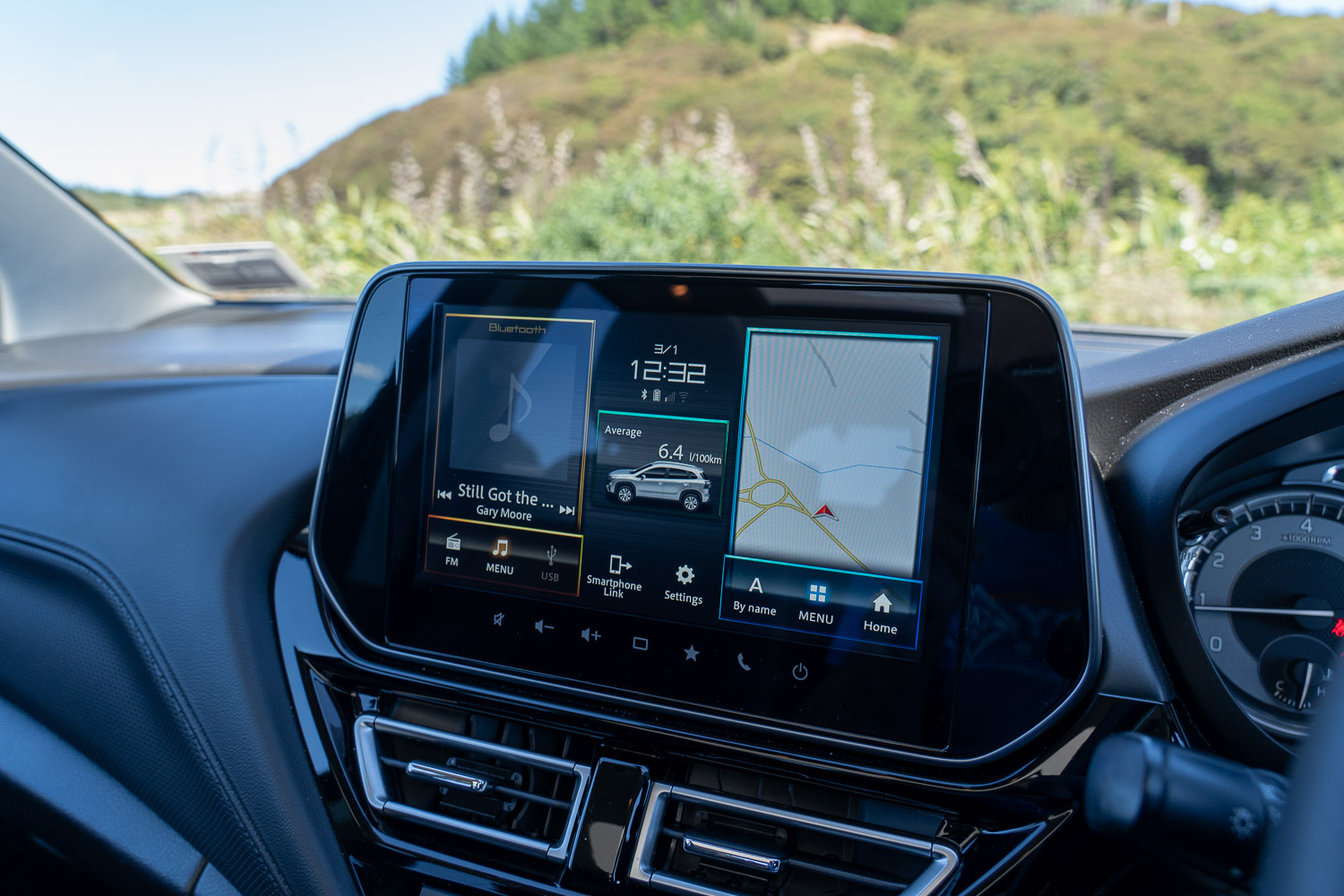
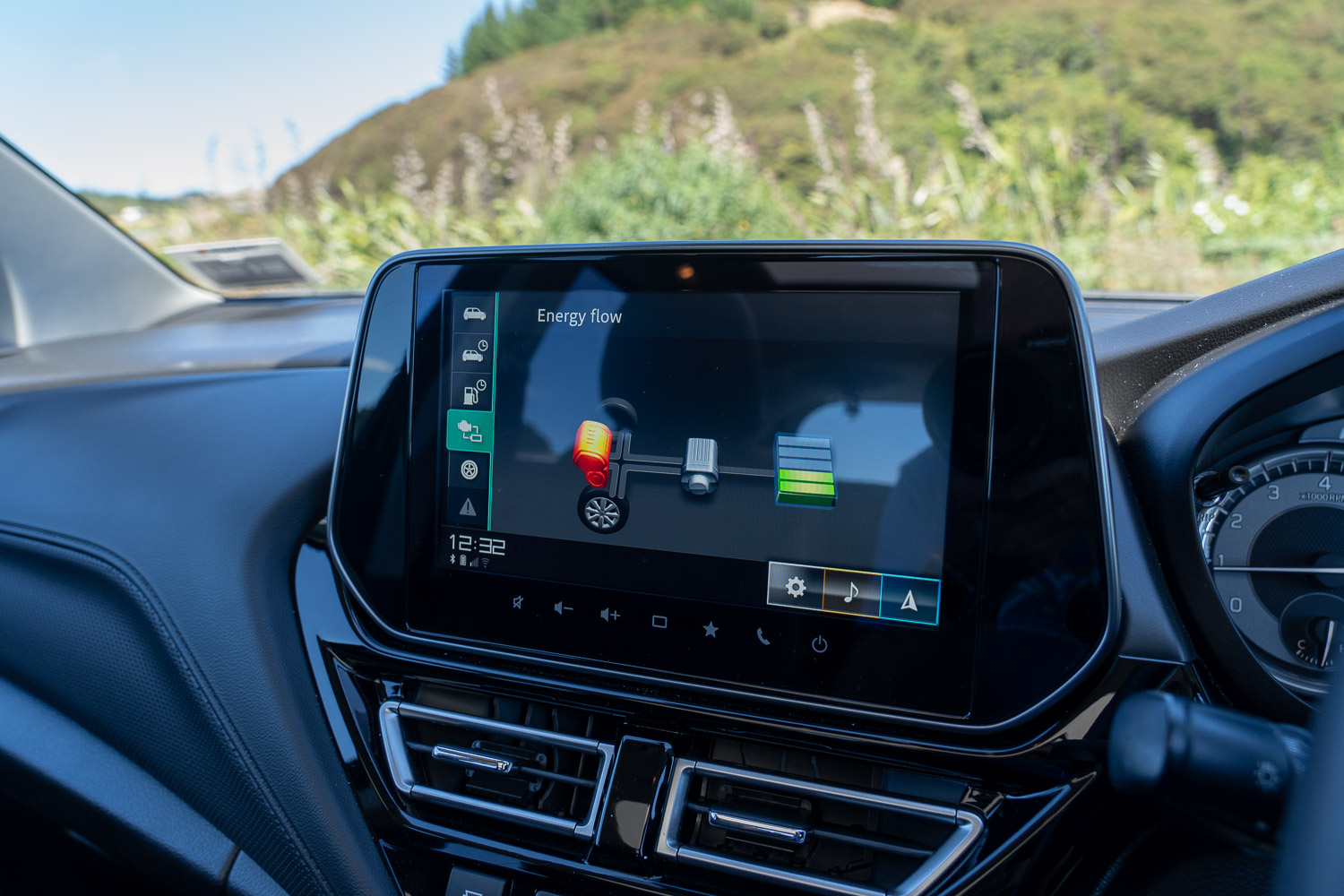
The six-speed automatic transmission is mostly well-behaved, picking the right gear at the right time, although there was occasional minor drivetrain shunting in our test car. This felt like it was coming from the hybrid system more than the transmission. It wasn’t bad, but it was noticeable.
Back to the drive modes; since our test car was the AWD model that meant Suzuki’s ALLGRIP Select dial on the centre console allows the driver to flick it to the right to engage Sport mode, a left flick will get the car into Snow mode, and pushing the dial in will select Auto drive mode, which the car starts off with. If using Snow mode, there is also an electronic lock button to the side of the Select dial for when the going gets tough.
My trip to Hawera meant a good amount of time in the car in a single, 4-hour trip. Observations on that drive include the infotainment system; it’s much improved now, with reasonable speed between screens. The Home screen is split into three sections, so is quite usable. The steering wheel feels fantastic in your hands, and the controls for audio, cruise control and phone are well-placed and simple to use without looking down.
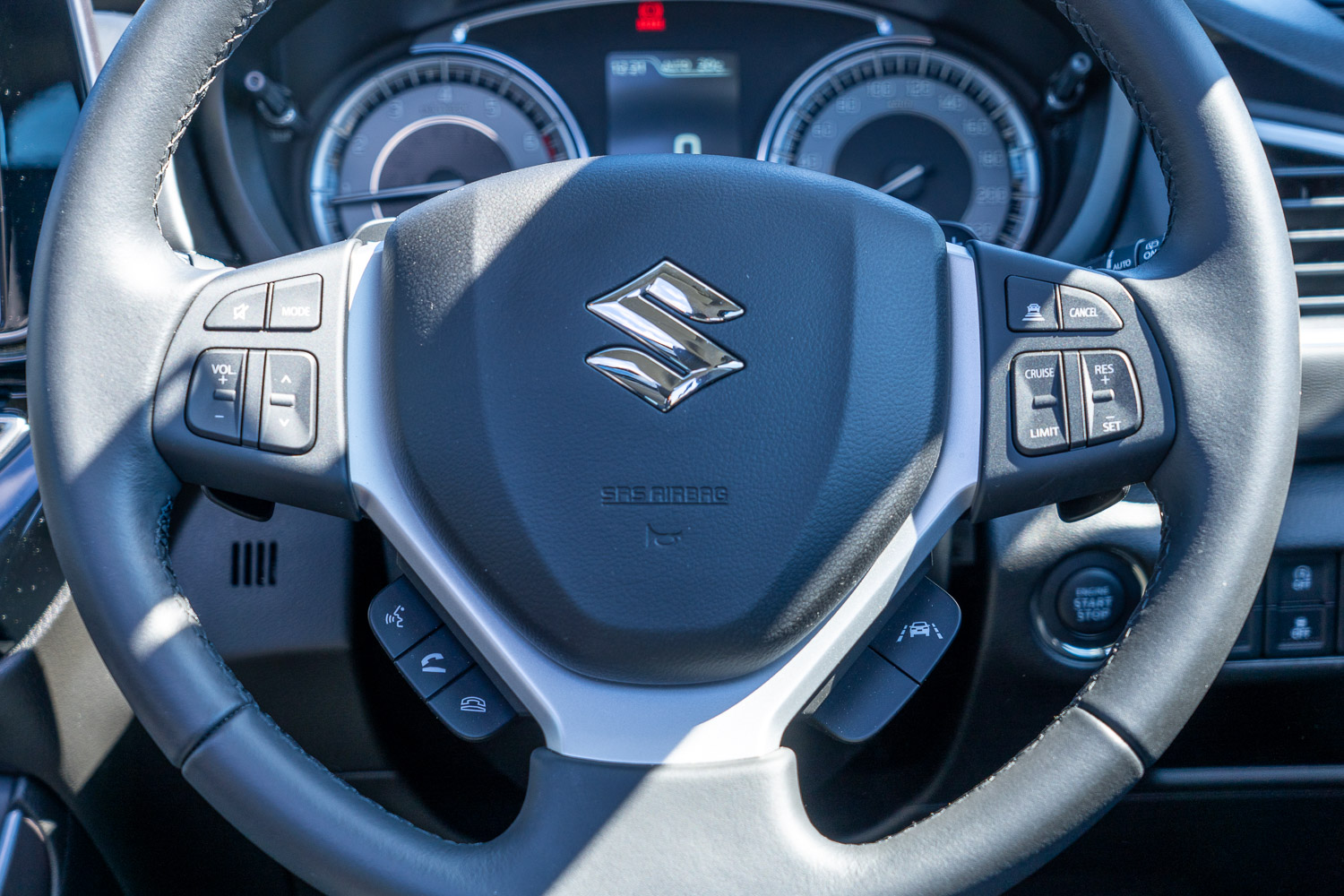
Probably due to its age, there is no traffic sign recognition on the S-Cross Hybrid, but it does have SatNav as standard. This generally works well, although it did send me through a rest home in Hawera, getting me some suspicious looks from the residents there. I made it out alive but did have a nice sweater thrown through the driver’s window. It fits, too.
The seats are stated as being “Leather and leather-effect weave seat upholstery”. For me they felt like a type of woven vinyl, quite practical but also just fine to sit on. Seat comfort over my long trip was okay, even though there is no lumbar adjustment. Side support is a little lacking, you will feel your body moving about quite a bit on any twisty roads.
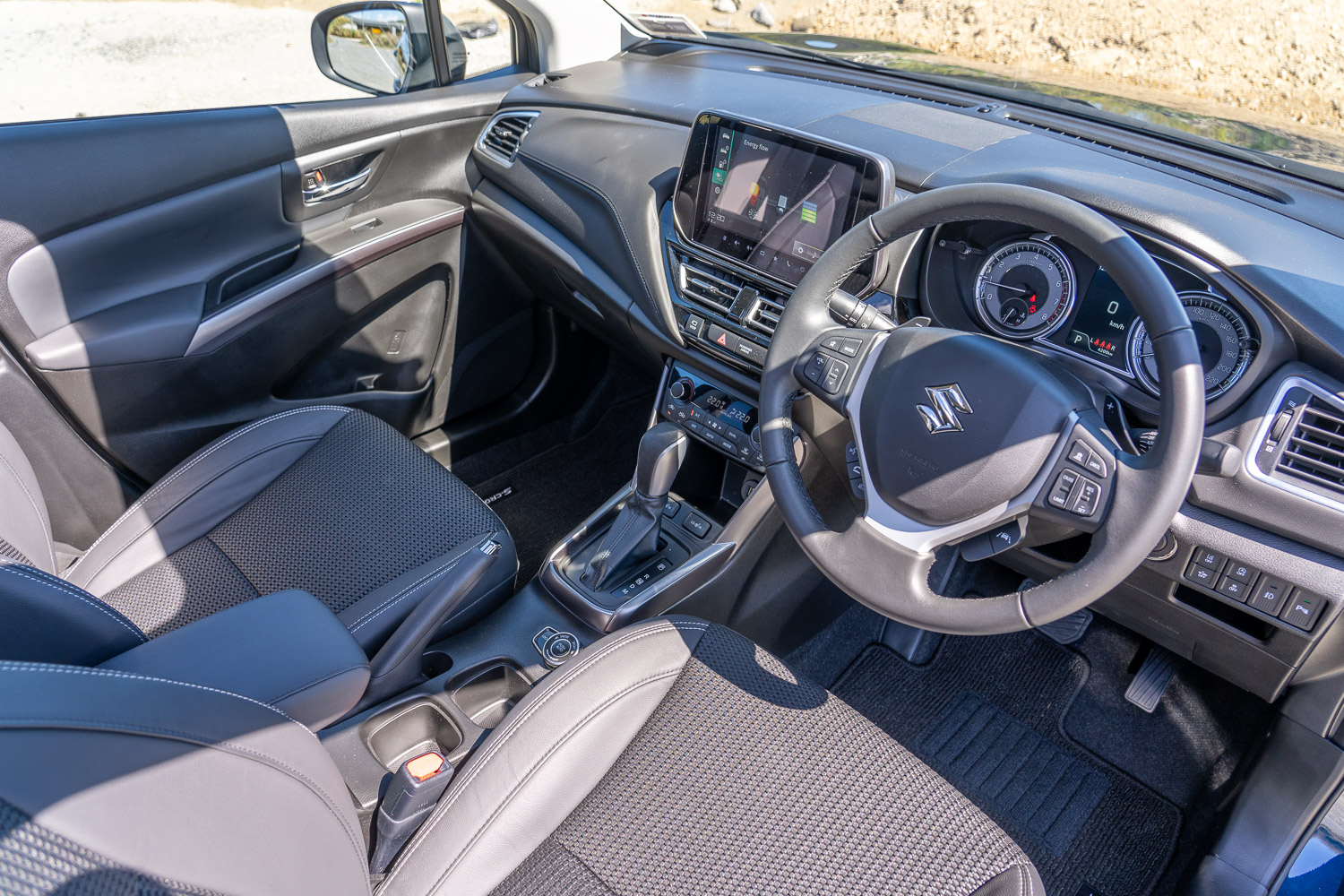
I love that Suzuki still uses physical dials and buttons to control the air conditioning, and long may this reign. It’s so much easier to control on the move than using a screen. The S-Cross Hybrid has 2-stage heated front seats, and these are also controlled by actual buttons, under the AC controls.
The gauges in the S-Cross are all analogue and nicely clear to read. There is no 50km/h reading, but there is a chunky digital speedo in the driver’s information centre (DID). There is a good array of options in the DID, including fuel consumption, power/torque output, G forces, a clock, and the hybrid drive diagram.
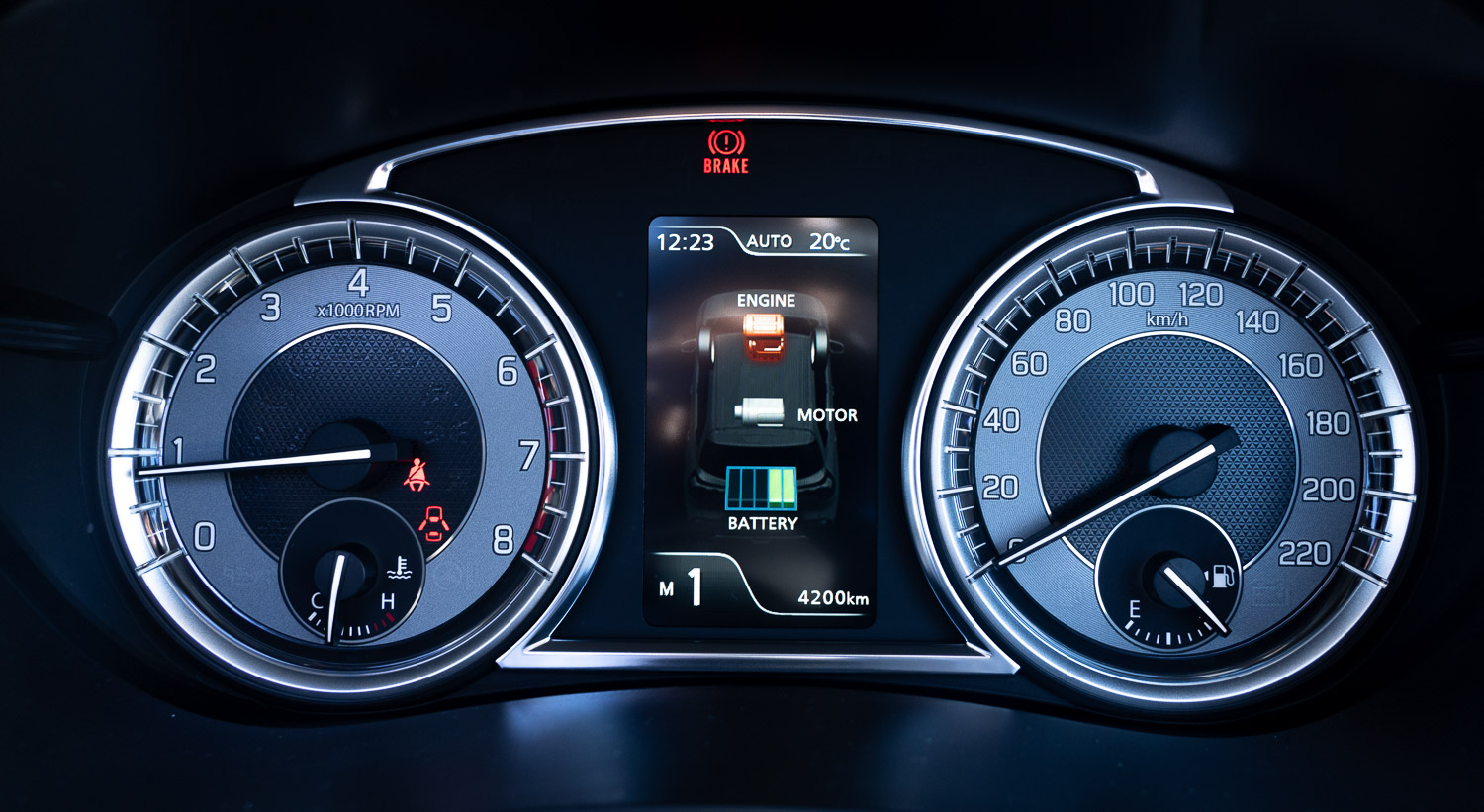
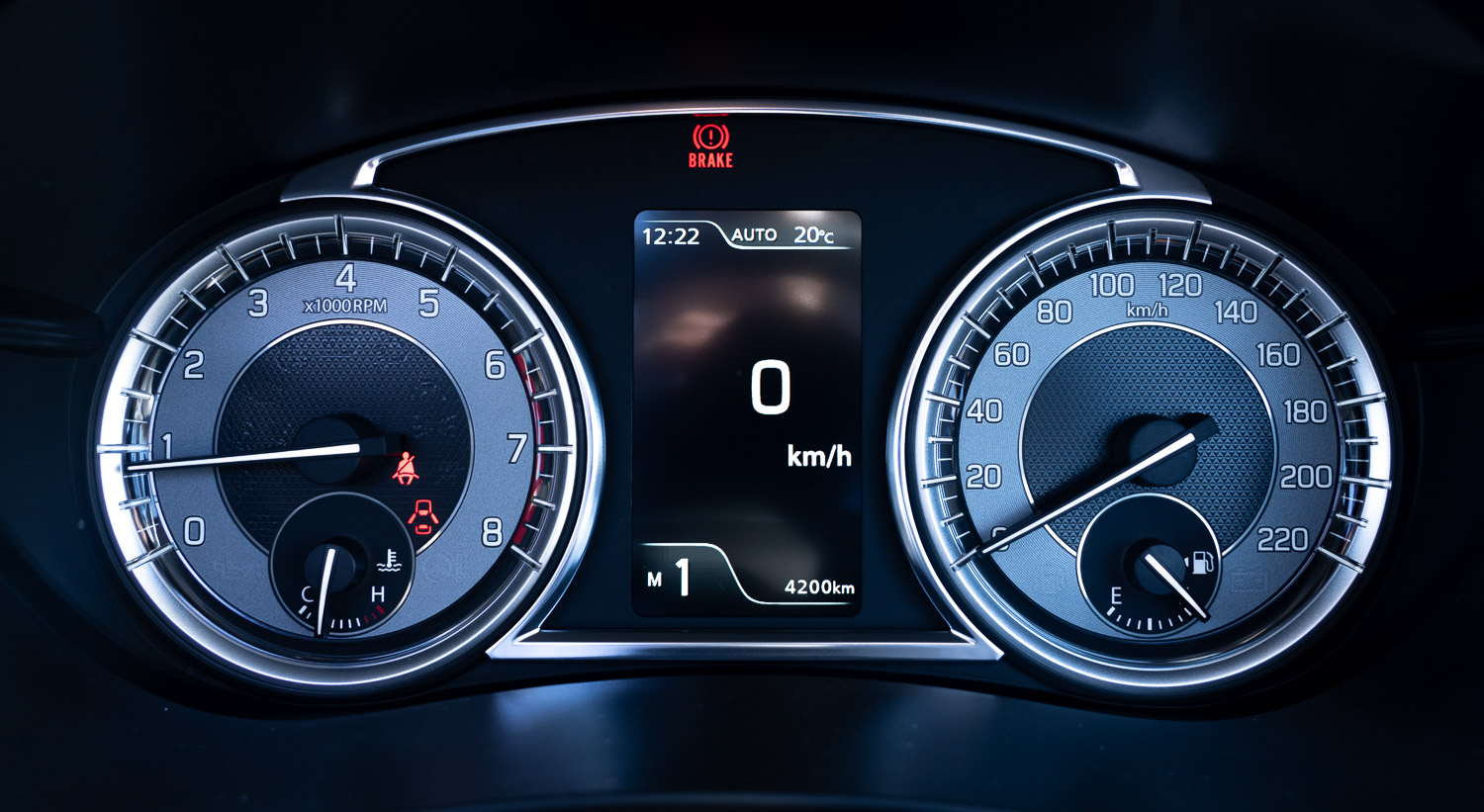
While the S-Cross Hybrid comes with adaptive cruise control, there is a manual handbrake so while adaptive cruise will bring you to a stop, it will beep and then release, so you have to be ready at that point to put the brake on to stop the car rolling forward.
Driving on the long stretches of SH1 is where the BoosterJet 1.4-litre engine loves to be; it’s very quiet at those times, and passing slower traffic is easy. There is a reasonable amount of wind noise at highway speeds and some road noise too, but tyre noise is almost non-existent. On my return trip to Wellington, the slab-side shape of the S-Cross showed it is affected by side winds on the straights, meaning I needed to keep a firm grip on the wheel.
Visibility out of the car is excellent, with a ‘normal’ shape SUV body that doesn’t have a sloping roofline to restrict your views out.
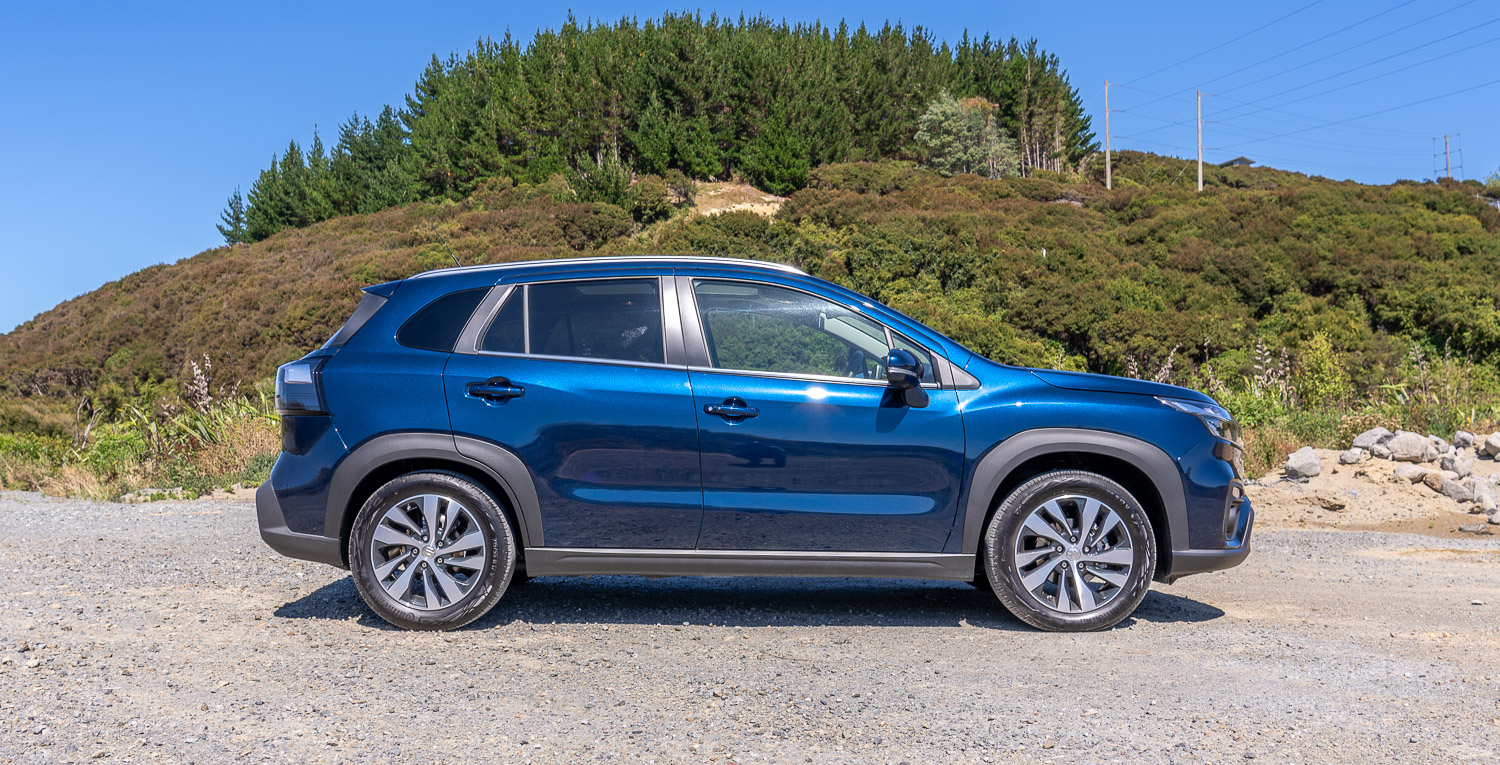
2023 Suzuki S-Cross JLX Hybrid AWD – Specifications
| Vehicle Type | Small Hybrid SUV |
| Starting Price | $45,990 |
| Price as Tested | $45,990 |
| Engine | 1.4-litre, 4-cylinder petrol-turbo with mild hybrid assist |
| Power, Torque kW/Nm | 95/235 |
| Transmission | 6-speed automatic |
| Spare Wheel | Tyre pump and repair kit |
| Kerb Weight, Kg | 1,330 |
| Length x Width x Height mm | 4300x1785x1585 |
| Boot Space / Cargo Capacity, Litres (seats up/seats down) | 430/1,230 |
| Fuel tank capacity, litres | 47 |
| Fuel Economy, L/100km | Advertised Spec – Combined – 5.9 Real-World Test – Combined – 6.1 Low Usage: 0-6 / Medium Usage 6-12 / High Usage 12+ |
| Towing Capacity Kg, unbraked/braked | 600/1,500 |
| Turning circle metres | 10.8 Small: 6-10m / Medium 10-12m / Large 12m+ |
| Warranty | 3 years 100,000km vehicle warranty 5 years powertrain warranty 5 years Roadside Assist |
| Safety information | ANCAP Rating – 5 stars – Link (2022 model) Rightcar.govt.nz – 5 Stars – QDU144 |
Have you enjoyed this review? Be sure to join our monthly email newsletter list so you don’t miss a single car review!


